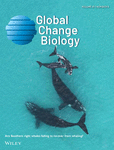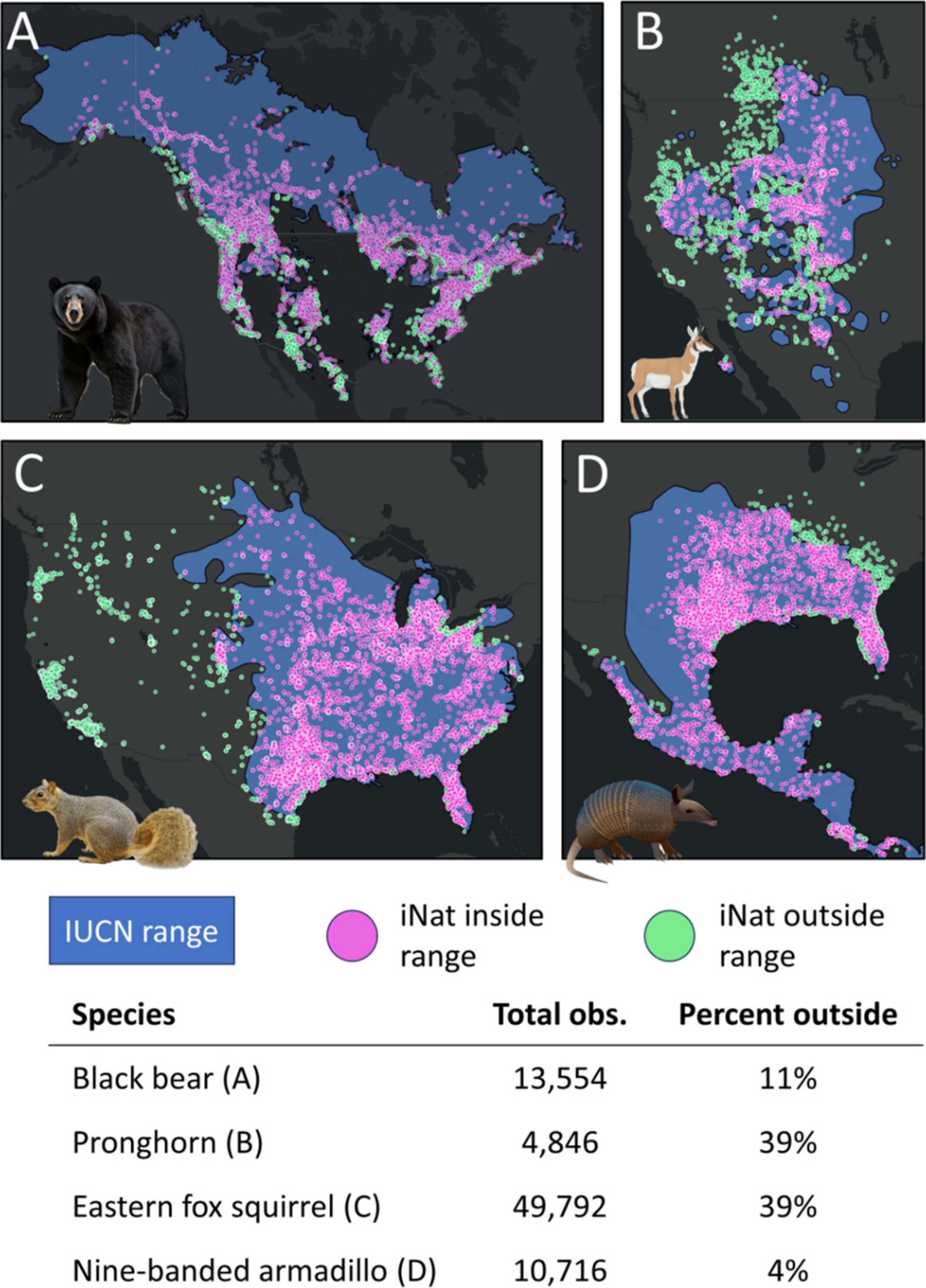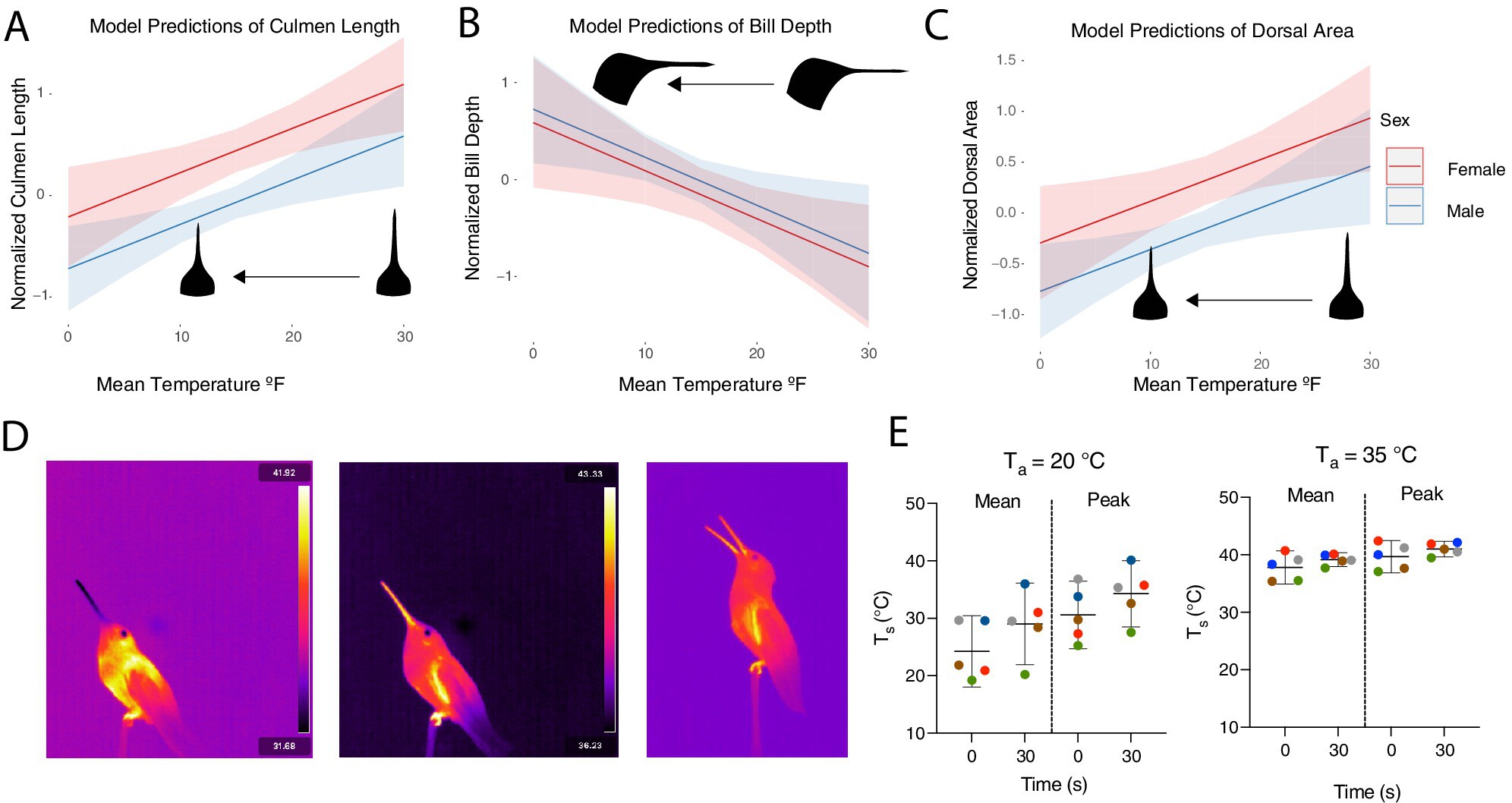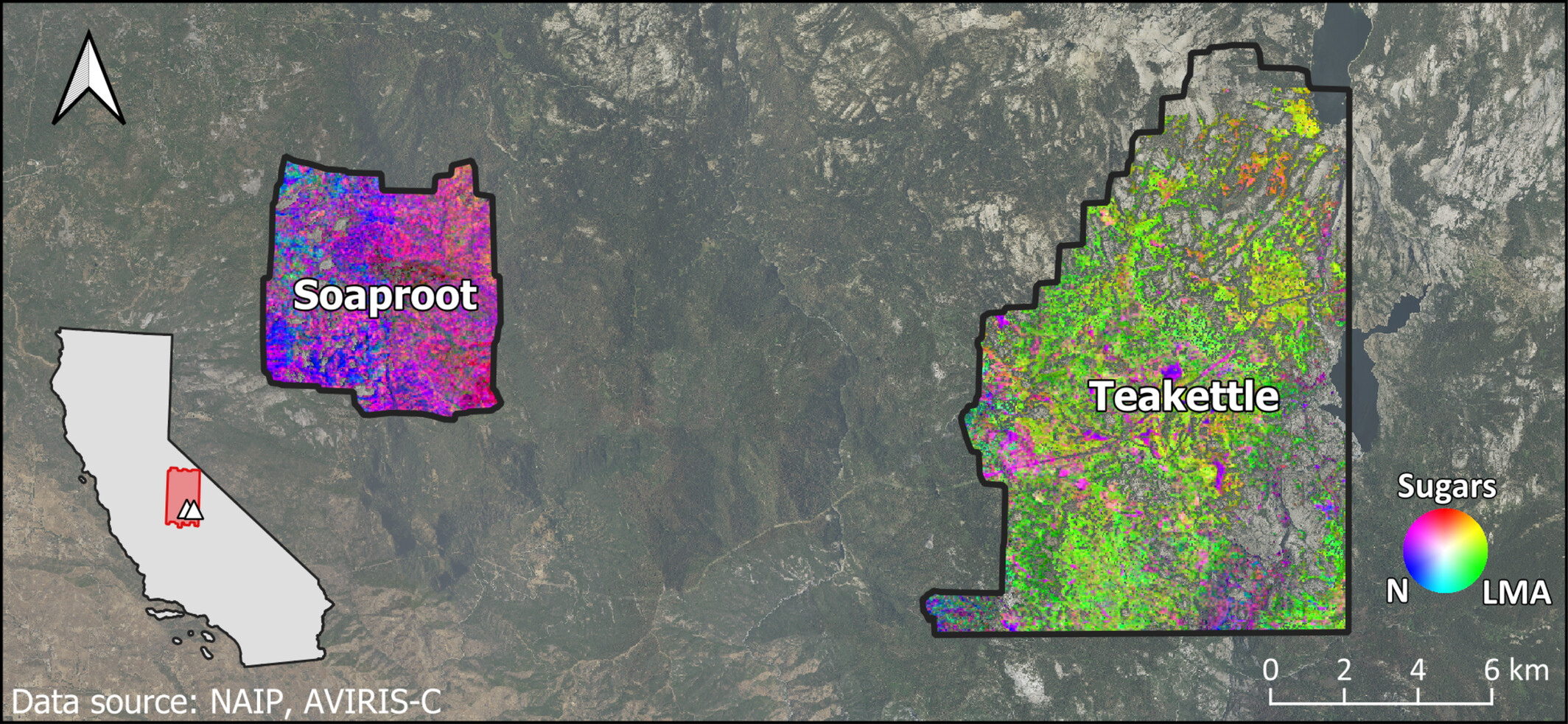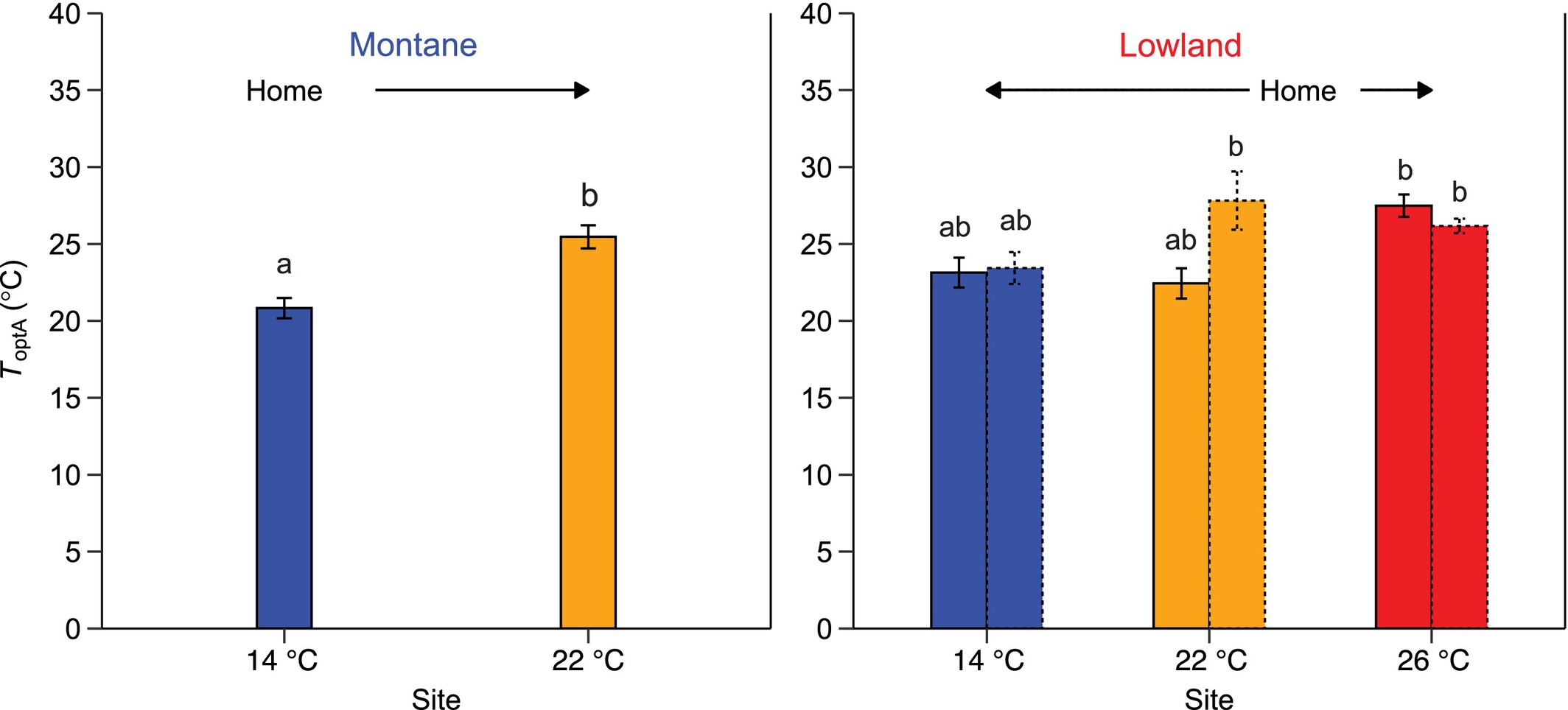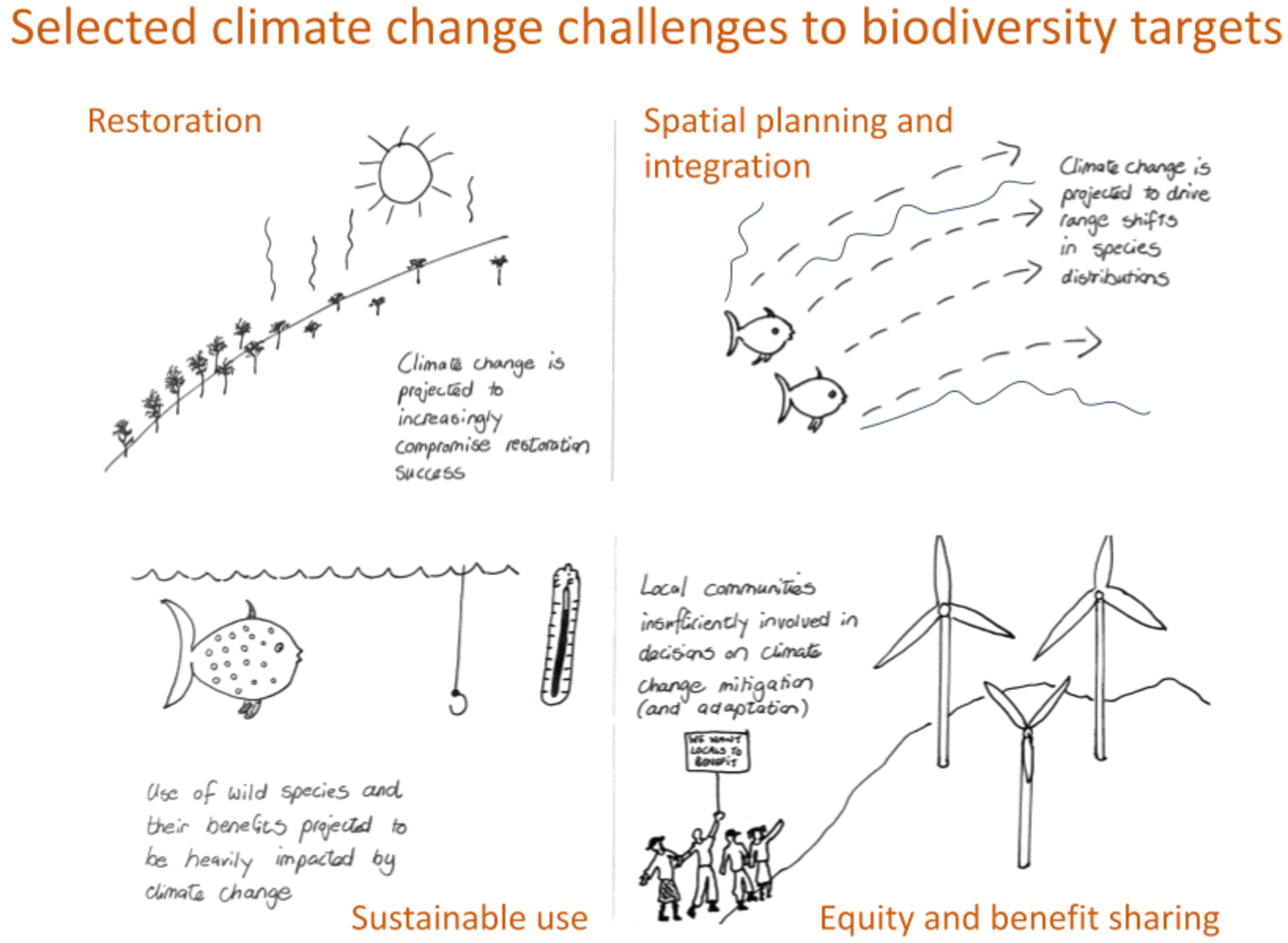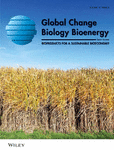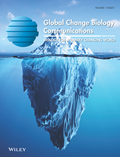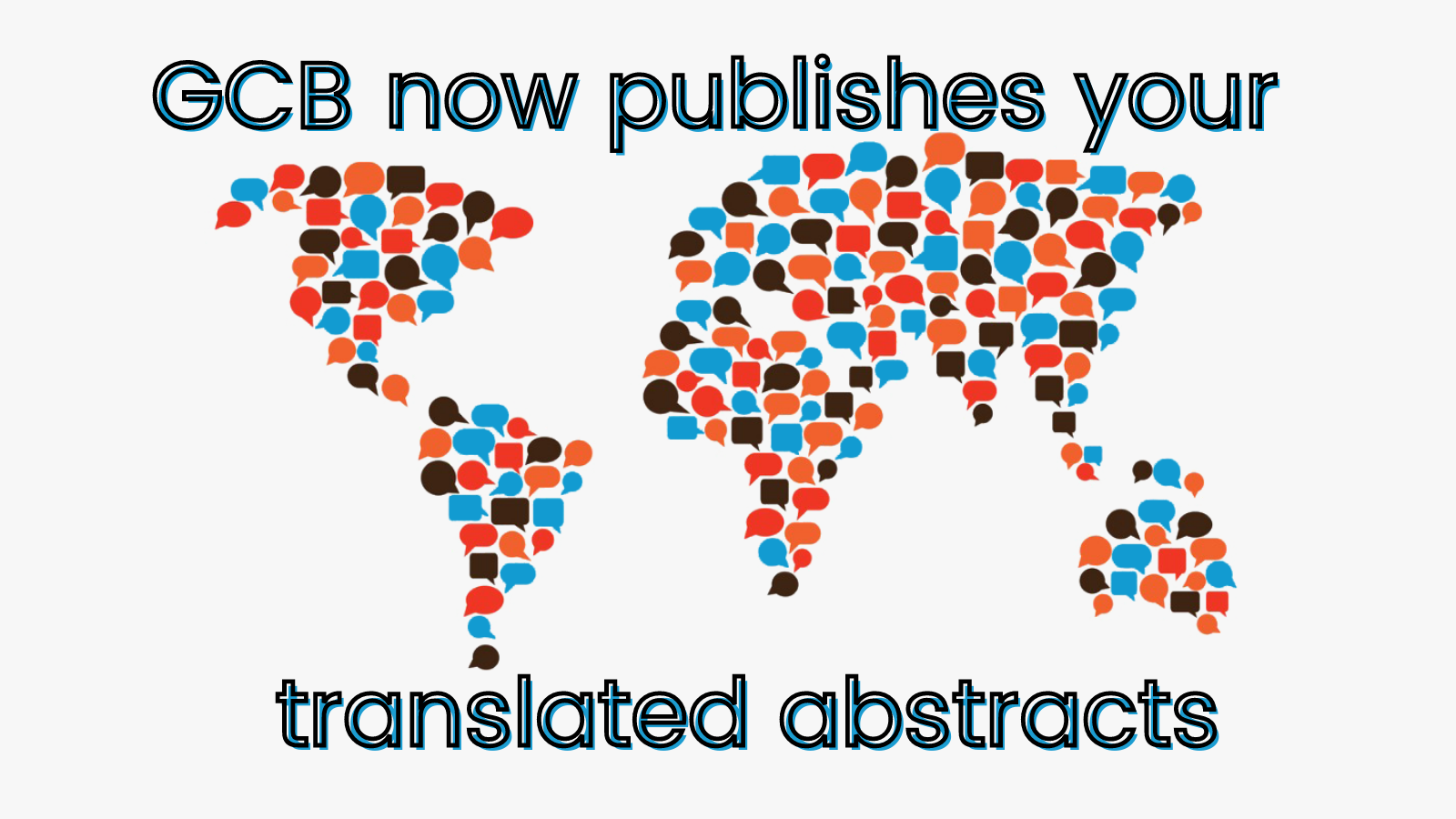Journal list menu
Export Citations
Download PDFs
ISSUE INFORMATION
RESEARCH ARTICLE
The End of an Era? Trends in Abundance and Reproduction of Australian Southern Right Whales (Eubalaena australis) Suggest Failure to Re-Establish Pre-Whaling Population Size
- First Published: 30 April 2025
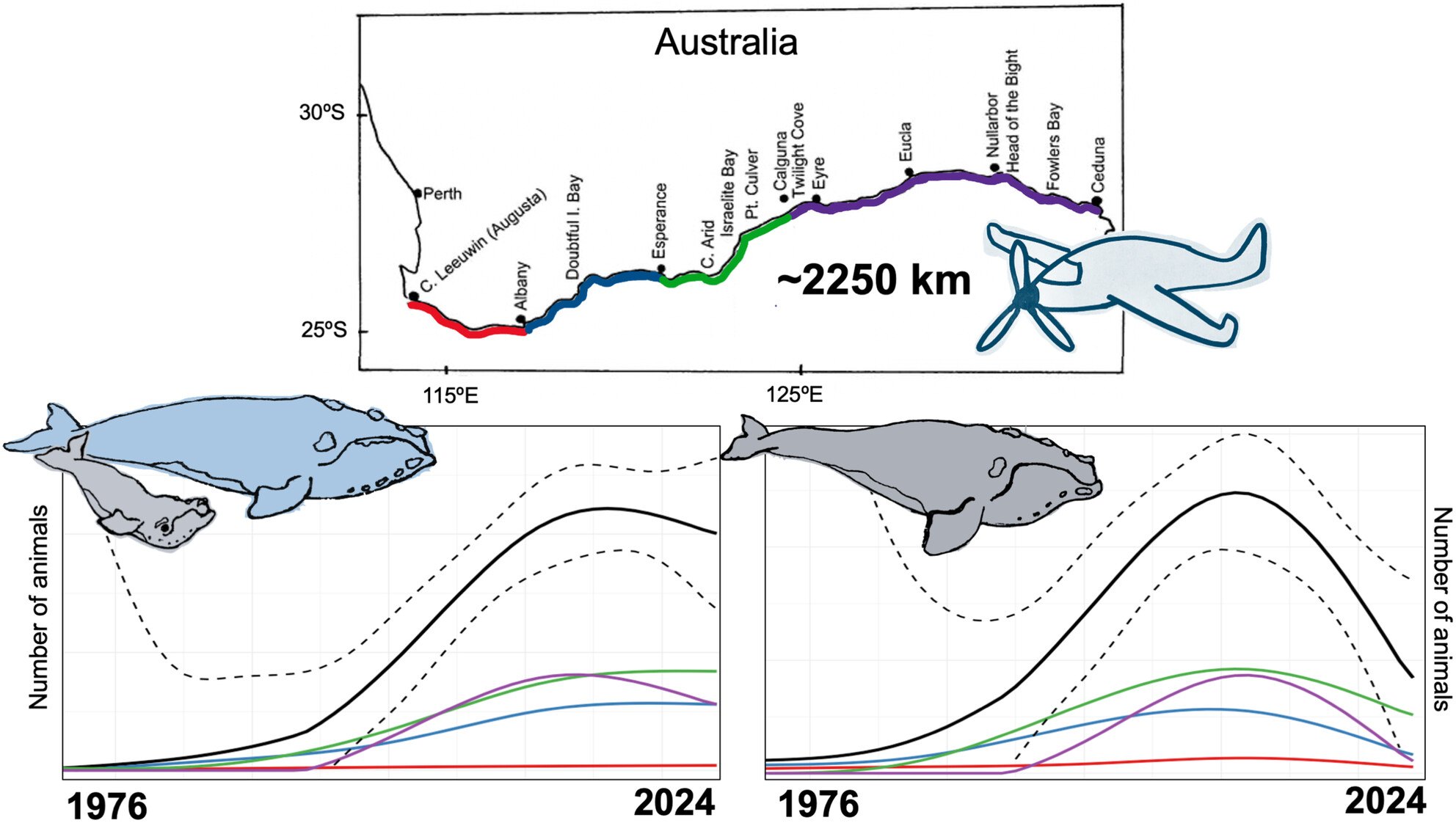
Whaling in the 1800s and 1900s led to the near extirpation of Southern right whales. Despite a substantial increase in numbers since the 1970s, new research reveals that the recovery of Australian southern right whales is stalling, as previously birth rates have stopped growing and coastal abundances recently plummeted. These findings may be marking a critical turning point in the species' recovery.
Climate-Induced Physiological Stress Drives Rainforest Mammal Population Declines
- First Published: 05 May 2025
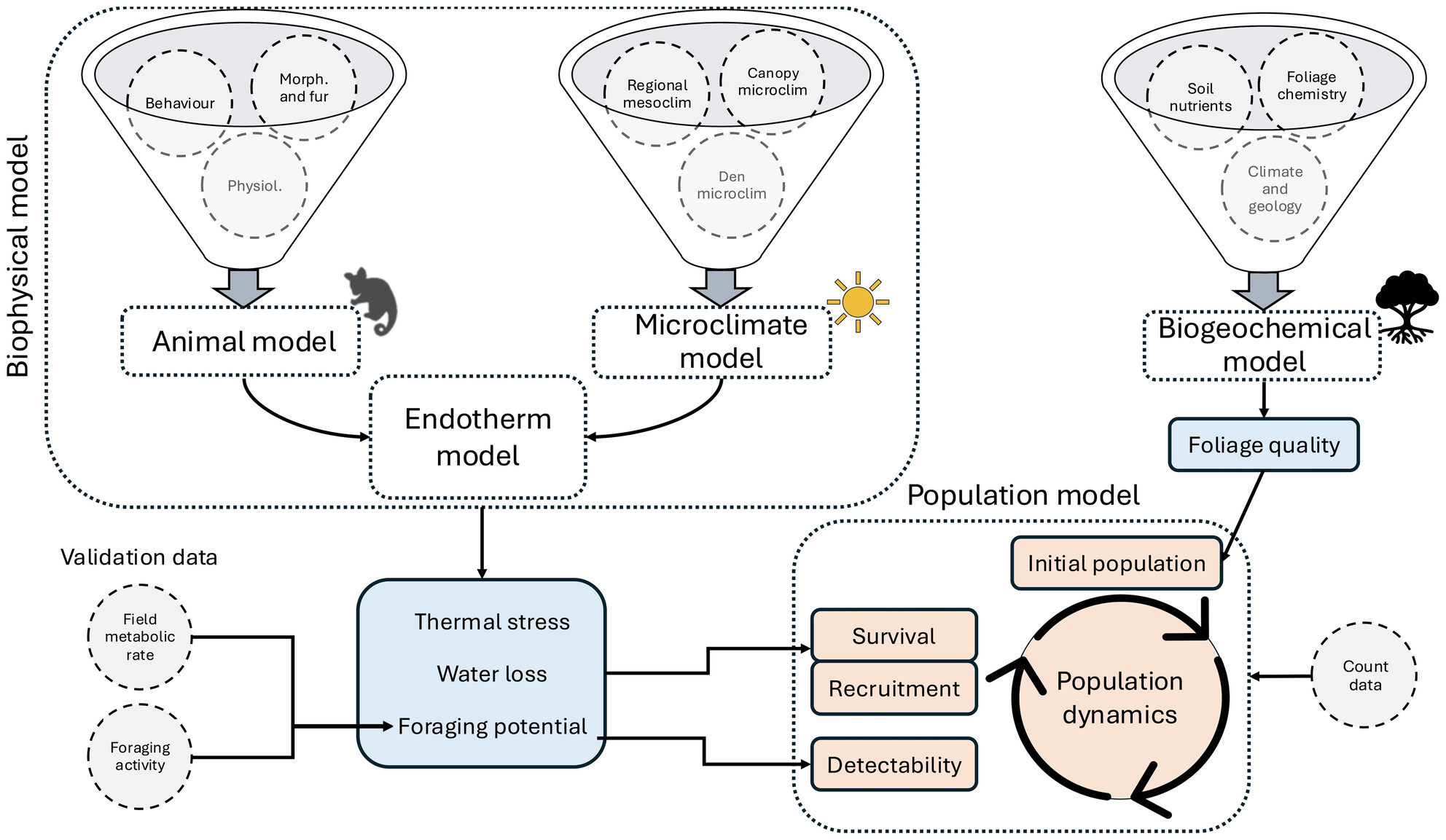
Climate change threatens wildlife worldwide, but the reasons for species decline are not always clear. We developed a new method that combines animal physiology, foraging limitations, and population changes to understand these declines better. Focusing on two species of ringtail possums, we found that climate change is causing stress from heat, lack of water, and reduced foraging, contributing to their long-term population declines. Each species is affected differently: one suffers from heat and dehydration, and the other mainly suffers from limited feeding time. Our work helps explain these impacts and guides better conservation actions.
INVITED COMMENTARY
Fitting the Bill in an Urban World: Hummingbird Beak Shape Responds to Anthropogenic Factors
- First Published: 23 May 2025
INVITED REVIEW
Soil Carbon Saturation: What Do We Really Know?
- First Published: 09 May 2025
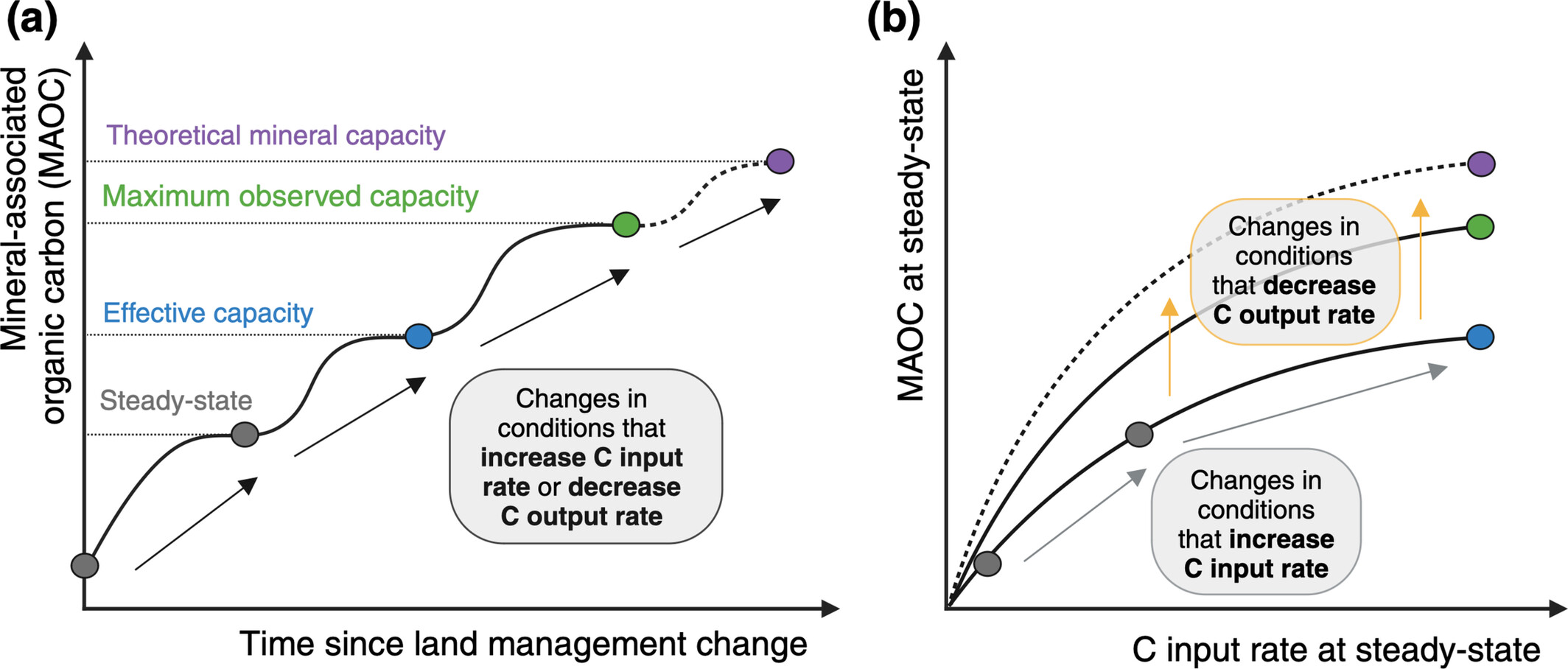
Managing soils to increase organic carbon presents a potential opportunity to mitigate and adapt to global change challenges. However, soils differ widely in their biophysical limits for carbon accumulation, and knowledge of these limits may aid in targeted management initiatives. This review explores the existence and utility of the concept of soil carbon saturation. We define key terminology, address common misconceptions, and review approaches used to quantify carbon saturation. Critically, we explore the utility of soil carbon saturation for informing carbon accrual, vulnerability to loss, and representations in biogeochemical models.
RESEARCH ARTICLE
Harnessing Microbes to Weather Native Silicates in Agricultural Soils for Scalable Carbon Dioxide Removal
- First Published: 02 May 2025
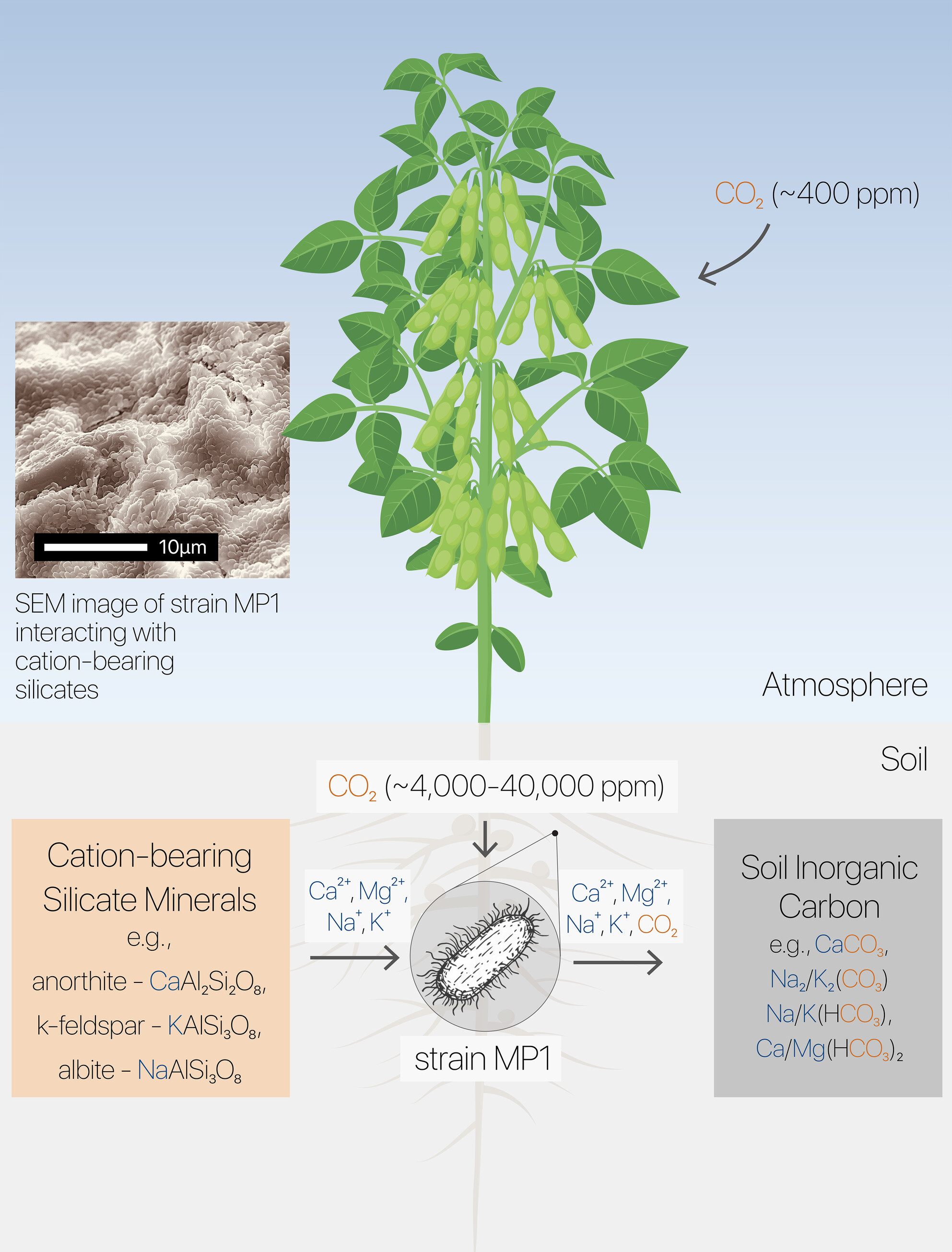
Soil microorganisms can help remove carbon dioxide from the atmosphere by speeding up the weathering of native soil minerals. In this study, we show that the soil microbe Bacillus subtilis MP1 significantly increases mineral weathering and the formation of soil inorganic carbon in laboratory, soil mesocosms, and field studies. This approach has the potential to leverage agriculture to enable scalable removal of carbon dioxide from the atmosphere.
TECHNICAL ADVANCE
Location-Scale Meta-Analysis and Meta-Regression as a Tool to Capture Large-Scale Changes in Biological and Methodological Heterogeneity: A Spotlight on Heteroscedasticity
- First Published: 02 May 2025
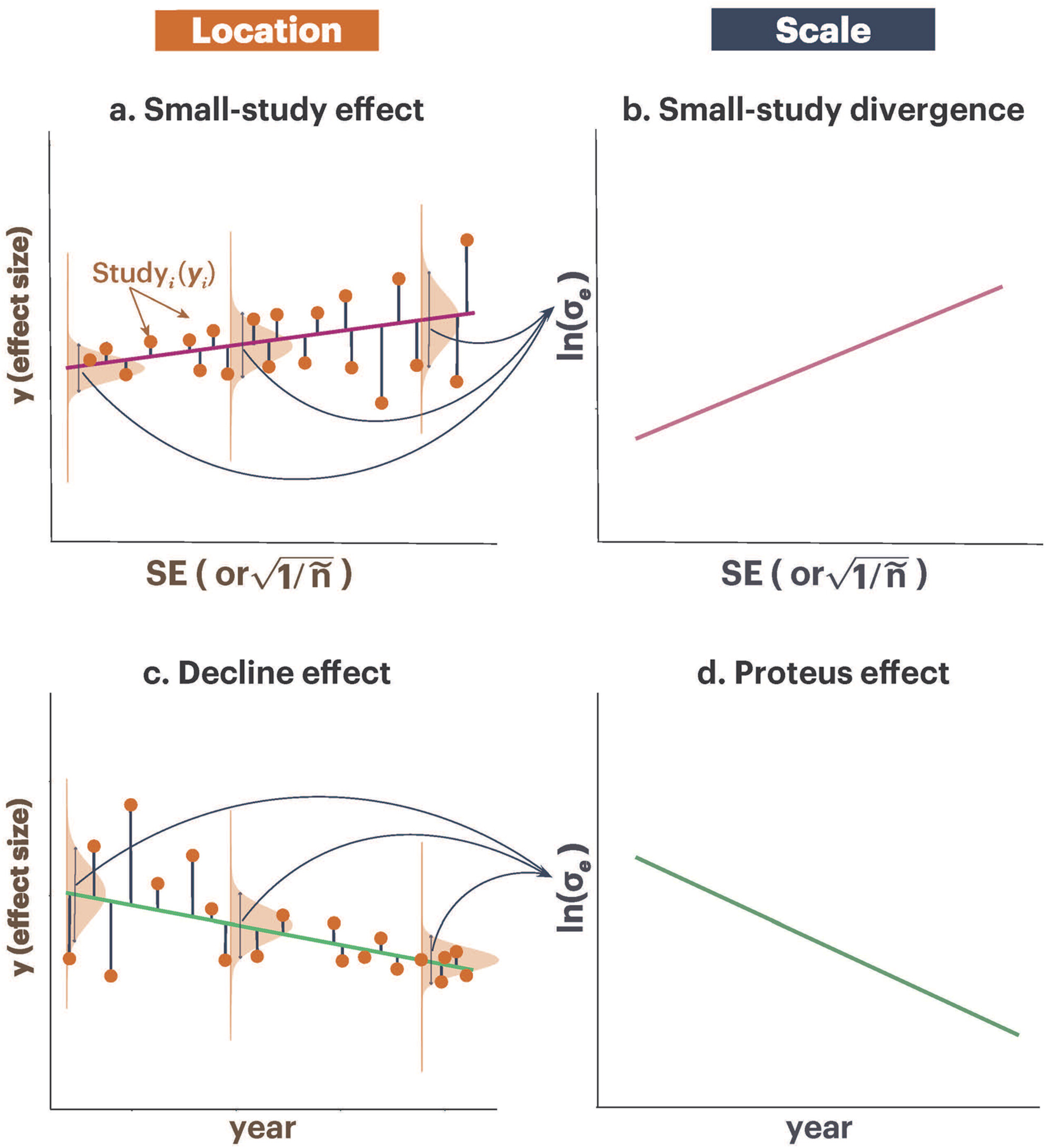
Meta-analyses are widely used to understand how species and ecosystems respond to global change, but most assume that variability among studies is constant. This assumption can hide important biological patterns related to resilience, sensitivity, or inconsistency in responses. Here, we highlight how location-scale meta-analysis can model both average effects and differences in variability across studies. This approach uncovers richer insights into ecological and evolutionary responses to global change, helping researchers better predict not only the direction but also the stability of biological changes across different conditions.
RESEARCH ARTICLE
Mammals on the Margins: Identifying the Drivers and Limitations of Range Expansion
- First Published: 04 May 2025
Role of Forest Carbon Change in Shaping Future Land Use and Land Cover Change
- First Published: 06 May 2025
Although global changes, especially rising CO2 levels, climate shifts, and nitrogen deposition, affect forest ecosystems worldwide, their influence on the forest area needed for timber, carbon storage, and subsequent land use and land cover change (LULCC) is rarely studied. This study addresses this gap and finds that including forest ecosystem carbon dynamics, mainly due to CO2 fertilization, reduces the projected expansion of managed forests and pastures, limits the loss of unmanaged lands, and increases cropland availability.
Variations in Ecosystem-Scale Methane Fluxes Across a Boreal Mire Complex Assessed by a Network of Flux Towers
- First Published: 05 May 2025
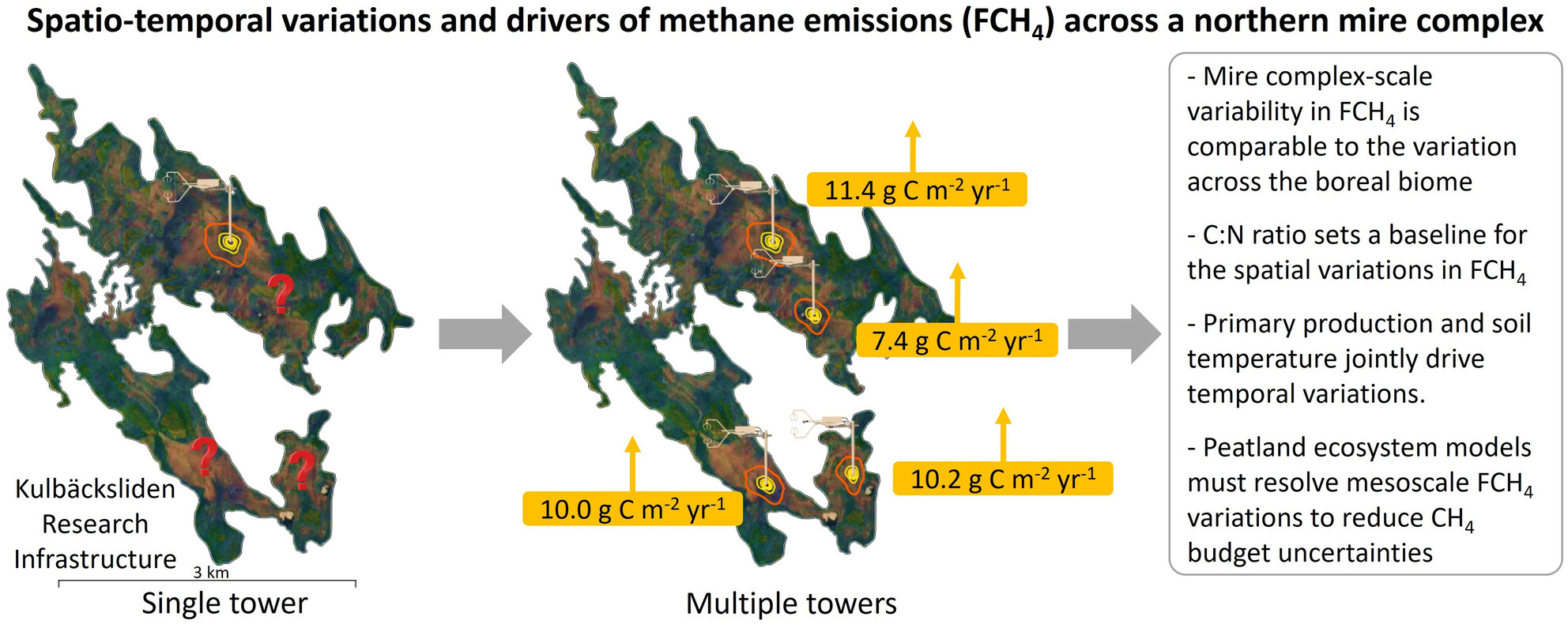
This study used methane emission data from four flux towers across a mire complex located in northern Sweden, over a period of 3 years (2020–2022). We found that plant productivity and soil temperature were the primary controls of the temporal variations in methane emissions, while physical and chemical properties of the peat soil determined their spatial variability across the mire complex. The significant variation in methane emissions observed within this single mire complex highlights the importance of considering local differences when predicting how these critical carbon-storing ecosystems will respond to climate change.
PERSPECTIVE
Does the C:N:P 1:1:1 Ratio Hold? Examining Log-Transformation Bias in Enzyme Stoichiometry
- First Published: 08 May 2025
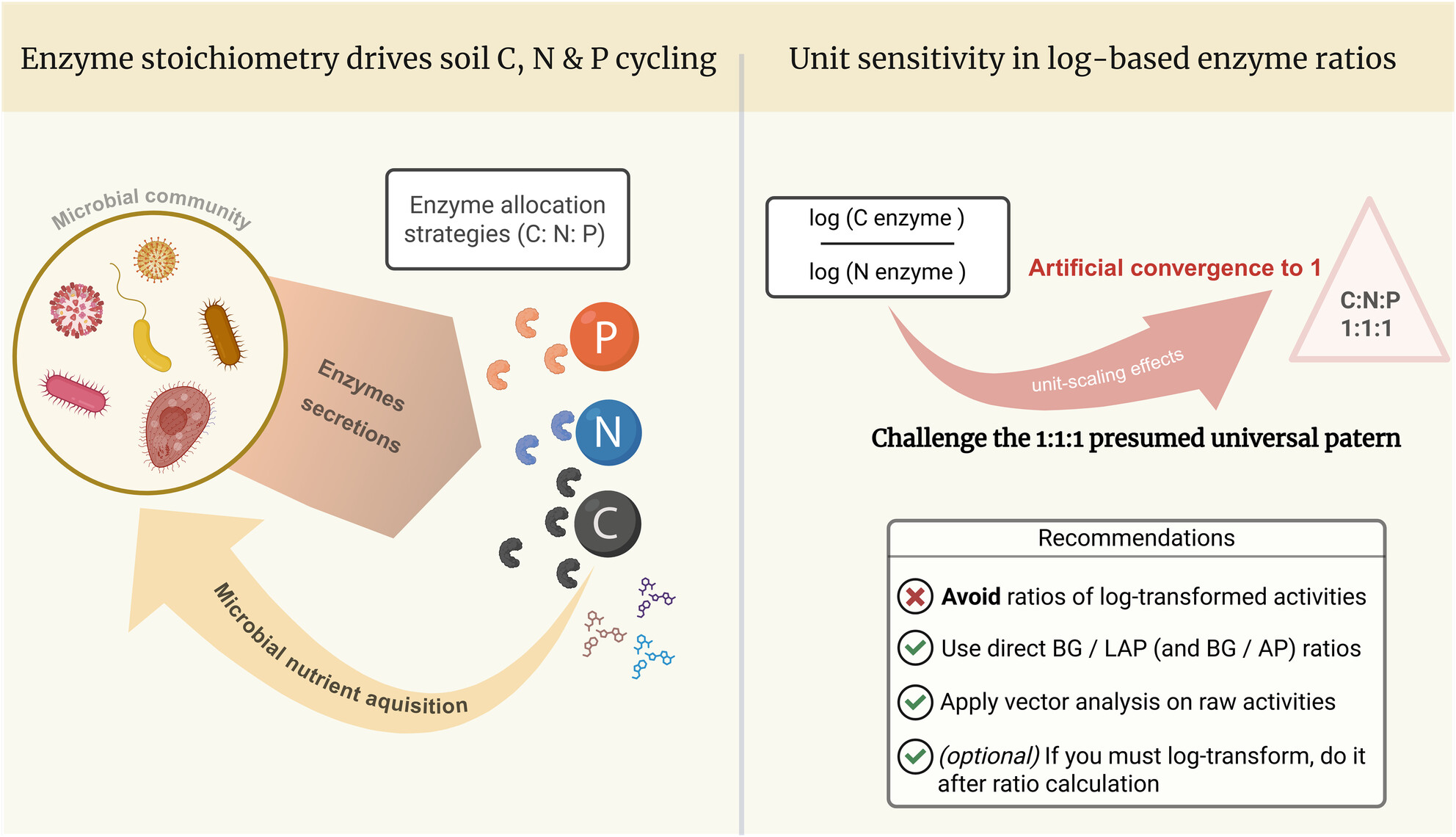
Microbial enzymes play a key role in recycling nutrients in soil, but common methods for analyzing enzyme ratios can introduce bias and reinforce misleading patterns. This article challenges the widely accepted global 1:1:1 C:N:P enzyme investment ratio, arguing it may be a methodological artefact, and recommends established, unit-independent approaches as more reliable alternatives for assessing microbial nutrient use.
RESEARCH ARTICLE
Microbial Immobilization Shapes the Non-Linear Response of Allochthonous Nitrogen Retention to Grassland Acidification Within Soil Aggregates
- First Published: 07 May 2025
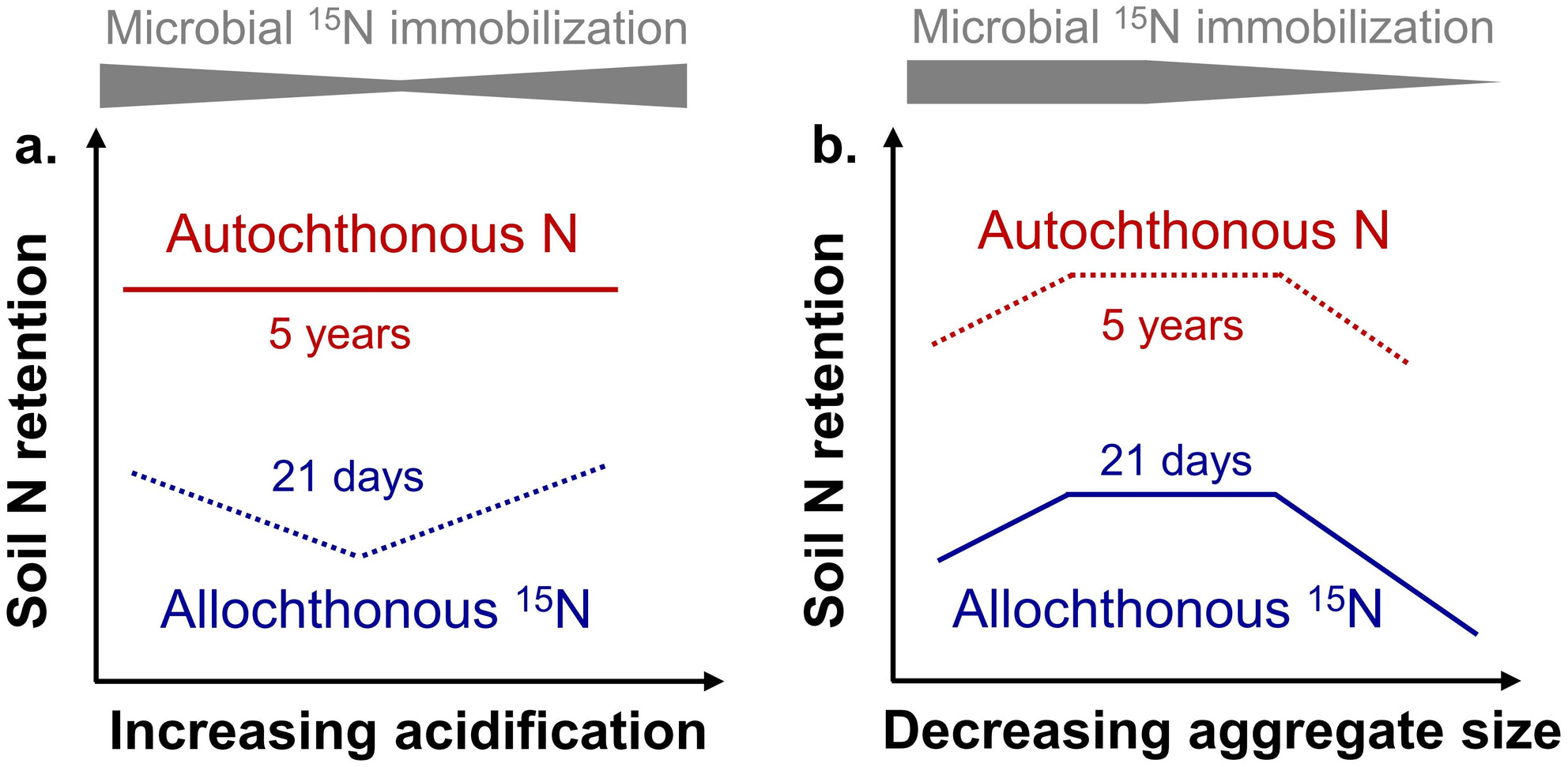
Under a global acidification scenario, physical protection within soil aggregates plays a crucial role in nitrogen retention and supply, often rivaling or even surpassing the influence of chemical nitrogen composition characteristics and biological transformations. Therefore, it is essential to consider the retention role of various soil organic nitrogen species across soil aggregate size classes in response to acidification. The study highlights the critical role of soil structure in modulating nitrogen cycling and underscores the importance of considering physical, chemical, and biological interactions to understand soil nutrient dynamics.
Plant Responses to Anomalous Heat and Drought Events in the Sonoran Desert
- First Published: 08 May 2025
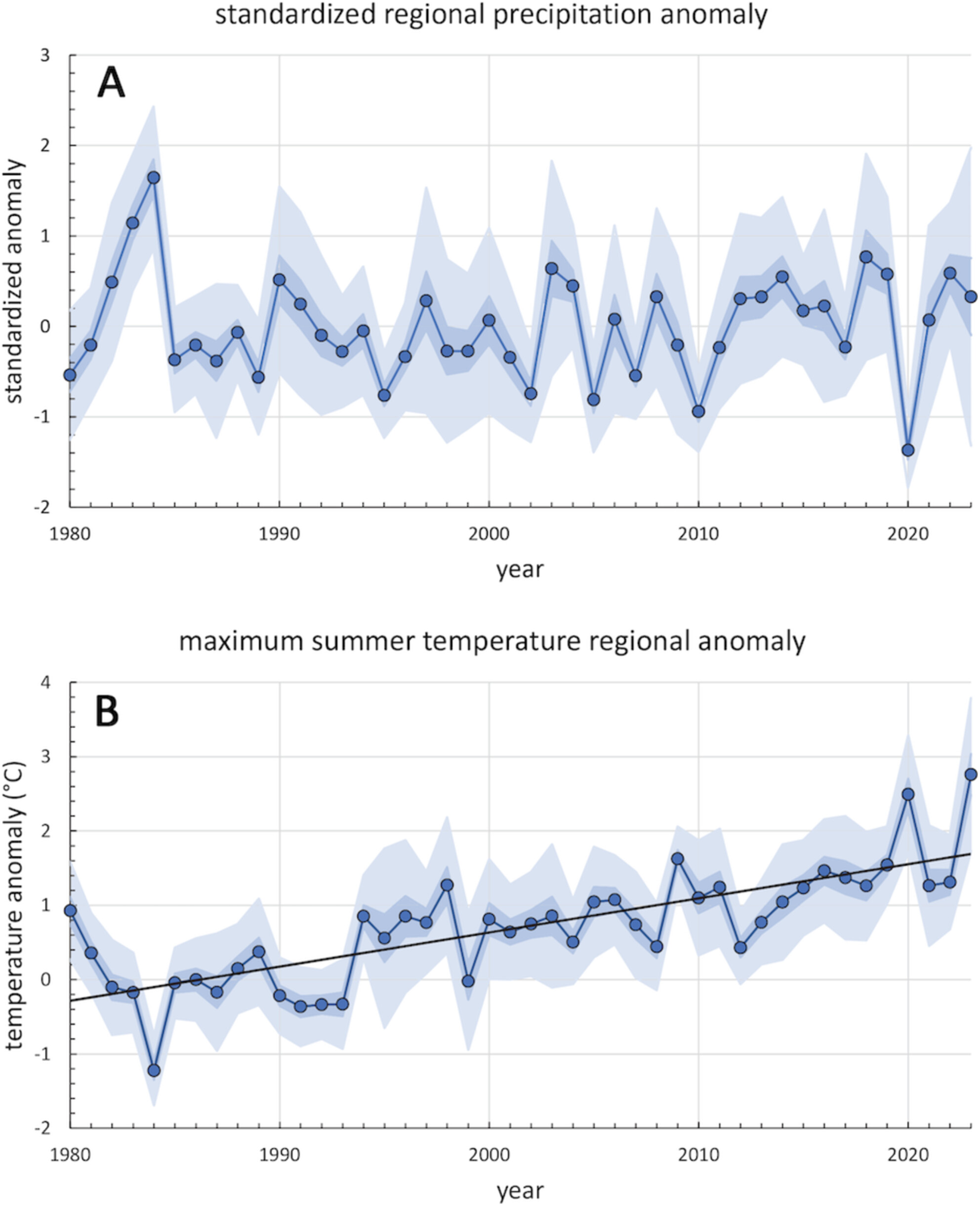
What are the impacts of region-wide heat and drought events on desert vegetation? This multi-scale assessment shows that columnar cacti and succulent trees show acute plant stress across the Sonoran Desert. The expected increased frequency of heat and drought events will likely have landscape-wide impacts that could fundamentally reshape populations of these keystone species and the communities that depend on them.
Insights Into the Efficiency and Health Impacts of Emerging Microplastic Bioremediation Approaches
- First Published: 14 May 2025
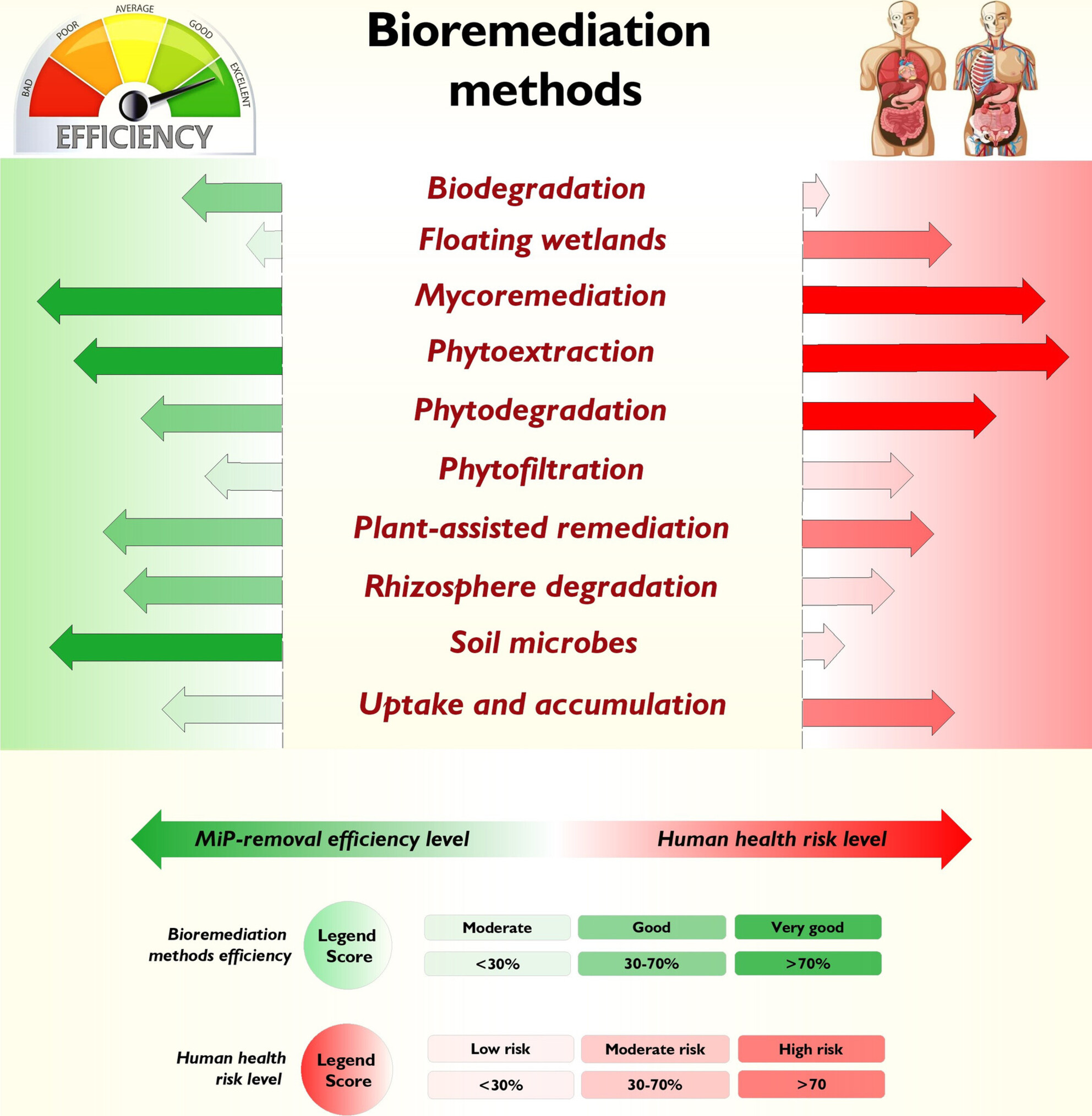
The present article examines the efficiency of currently emerging approaches for microplastic bioremediation, their strengths and weaknesses, and their potential impacts on the environment and human health. Such methods leverage natural biological processes to degrade and remove microplastics. However, significant challenges remain, including the inefficacy of current methodologies like uptake and accumulation, phytofiltration, and floating wetlands, which struggle with universality, scalability, and practical efficiency. The review also underscores human health risks associated with these bioremediation methods, particularly from exposure to fungal spores, mycotoxins, and hazardous metabolites produced during microbial degradation.
Green Manure Coupled With Straw Returning Increases Soil Organic Carbon via Decreased Priming Effect and Enhanced Microbial Carbon Pump
- First Published: 07 May 2025
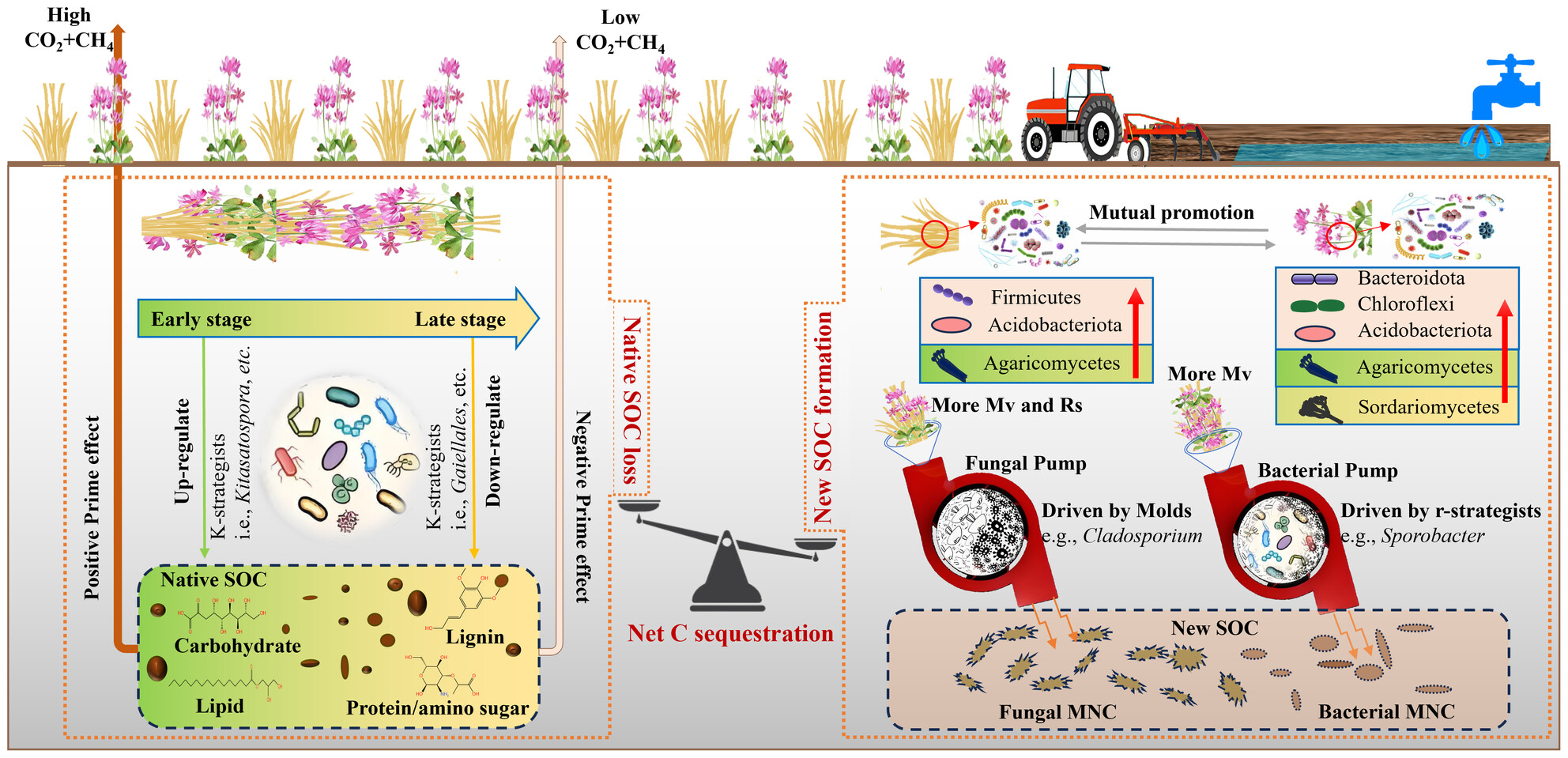
The synergistic application of green manure and rice straw in southern Chinese paddy fields rapidly improves soil carbon sequestration, evidenced by an 830.2 kg C ha−1 year−1 rise in soil organic carbon (SOC) stock and a maximal sequestration efficiency of 23.1%. This phenomenon stems from the interaction between low- (rice straw) and high- (green manure) quality residues, which concurrently inhibit native SOC mineralization and facilitate new SOC formation via microbial carbon pump processes.
Darkening of the Global Ocean
- First Published: 27 May 2025
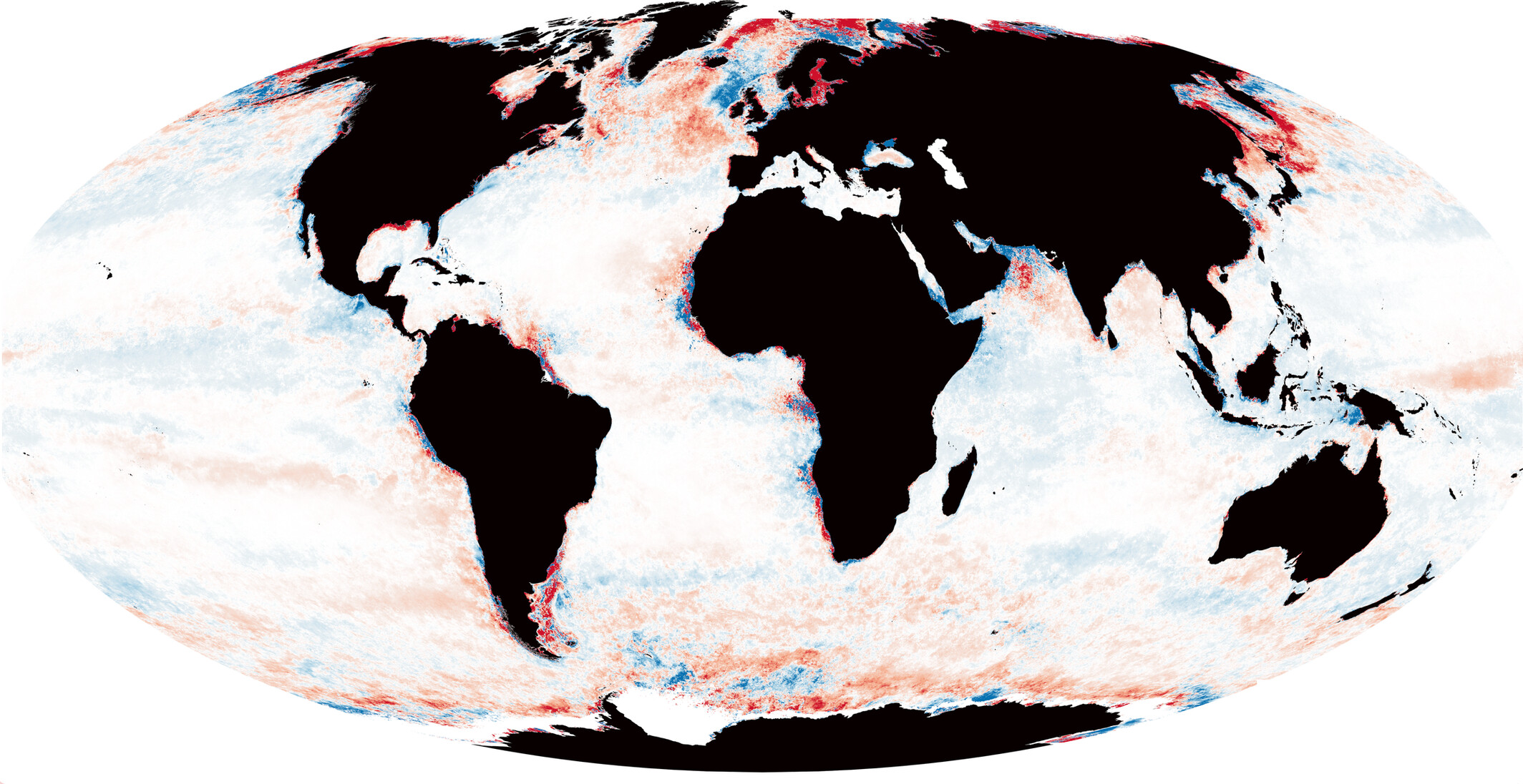
The ocean is darkening, with less sunlight reaching deeper waters over the past 20 years. Analysing satellite data, we found that 21% of the global ocean has experienced reduced light penetration, with photic zones shrinking by over 50 m in 9% of ocean areas. This darkening isn't limited to coastal waters but extends into the open ocean. Likely causes include increased nutrients, organic matter and shifts in ocean circulation. While the full impact is unknown, this trend could disrupt marine ecosystems, food chains and climate regulation, posing serious risks to ocean health.
Loss of Stomatal Regulation Sensitivity to CO2 and Reduced Xylem Hydraulic Conductivity Contribute to Long-Term Tree Decline and Mortality
- First Published: 20 May 2025
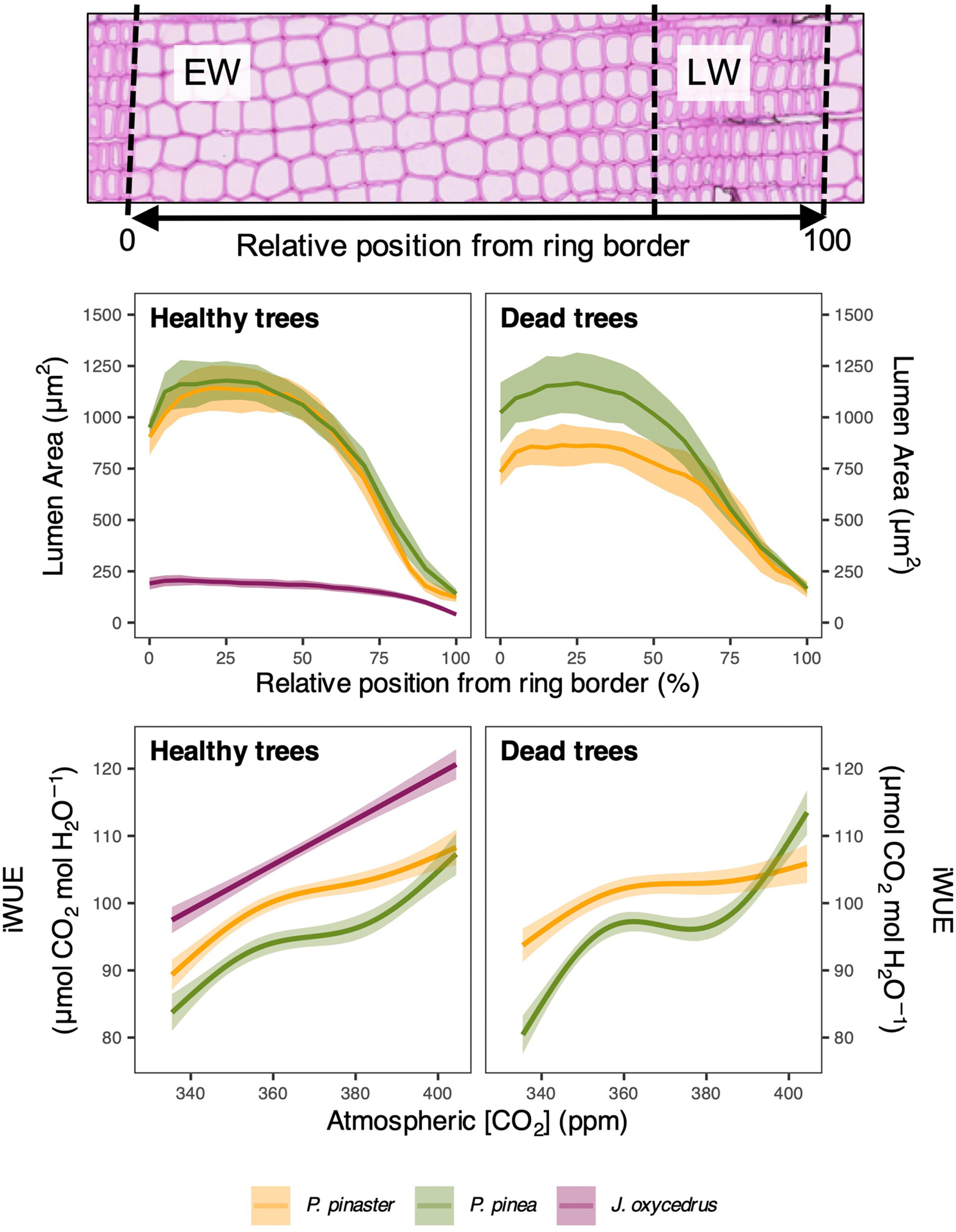
Increasing drought threatens forests, but tree species respond differently. We examined how long-term drought and rising CO2 affect three Mediterranean tree species with different drought tolerances. P. pinaster showed widespread mortality, linked to reduced xylem hydraulic efficiency and a limited ability to adjust its water-use efficiency under stress and a limited capacity to benefit from rising CO2. In contrast, P. pinea and J. oxycedrus showed higher plasticity in water-use efficiency, which increased with increasing atmospheric CO2. Species differences in hydraulic traits and physiological plasticity helped explain the observed patterns of decline and mortality. Our results highlight how species-specific responses to drought and atmospheric CO2 influence tree vulnerability under climate change.
Environmental Change Can Result in Irreversible Biodiversity Loss in Recently Formed Species Flocks
- First Published: 10 May 2025

Environmental changes affecting a single species can trigger cascading effects resulting in the extinction of other species. This study shows how shifts in the size structure of one species can increase competition among small juveniles of multiple species, leading to irreversible biodiversity loss. These results reveal a new mechanism behind sudden ecosystem collapses and highlight the potential for unexpected outcomes in the face of shifting ecological conditions.
Climate-Driven Body Size Changes in Birds and Mammals Reveal Environmental Tolerance Limits
- First Published: 09 May 2025
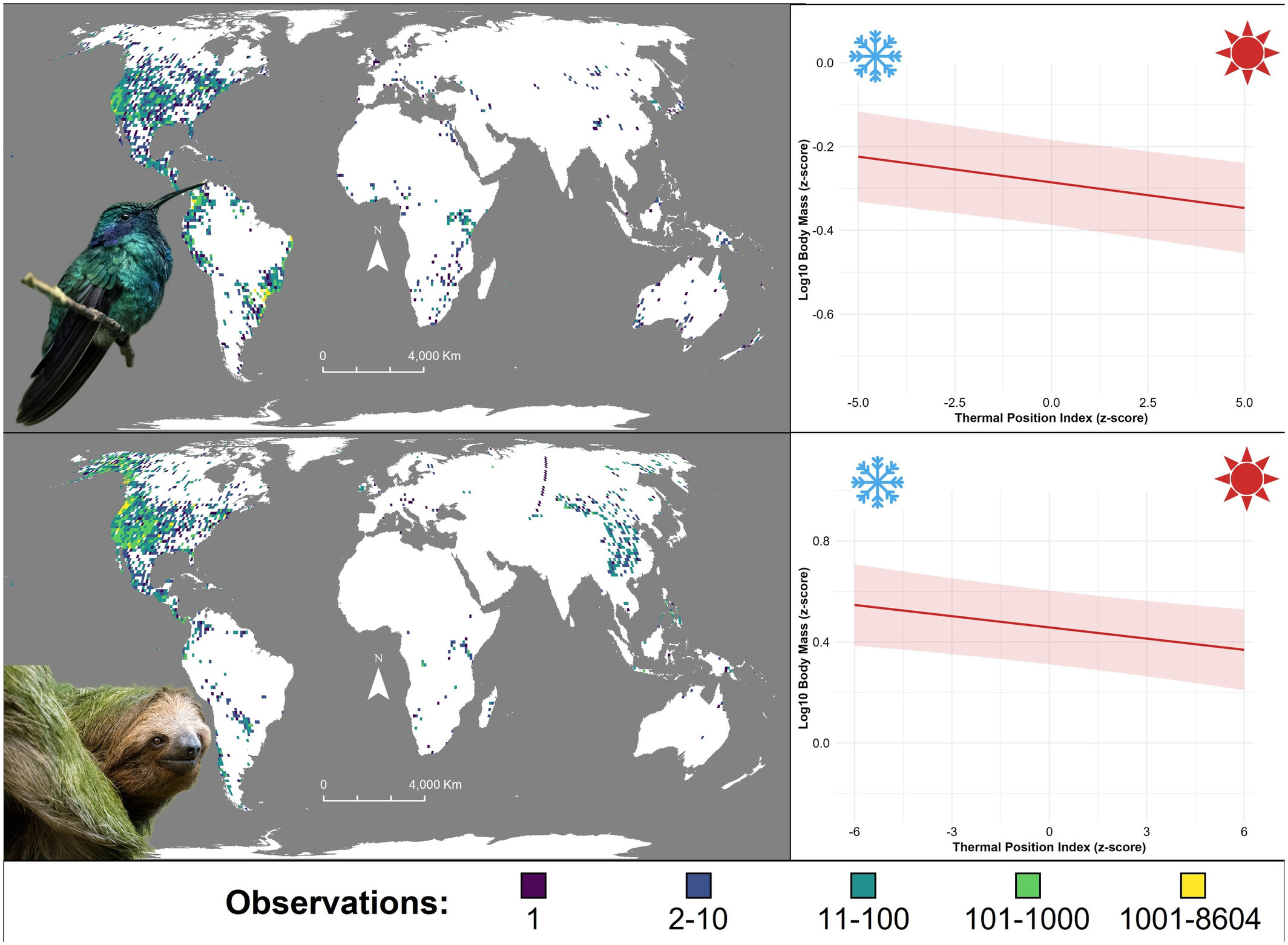
Within bird and mammal species, individuals with smaller body mass and shorter body length measurements occupy habitats in closer proximity to warm niche limits. Additionally, habitats closer to species dry niche limits were associated with smaller body sizes in bird and mammal species. Aridity and thermal conditions were also found to interact, resulting in a strengthened association of smaller body sizes with habitats closer to species warm niche limits.
Global Decline in the Size of Sea Turtles
- First Published: 14 May 2025
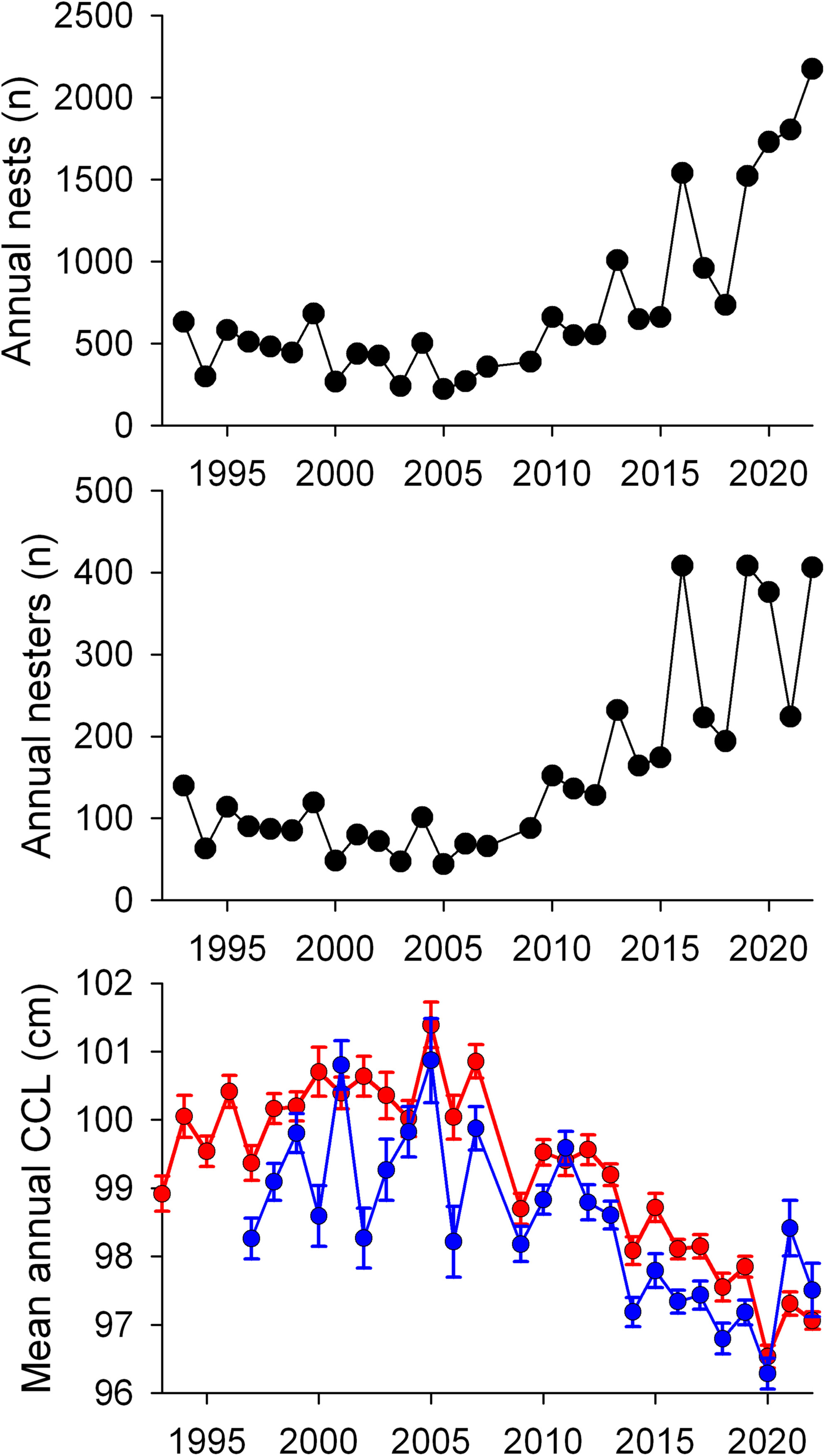
Changes in mean adult body size may be a universal response to global warming and sometimes lead to conservation concerns. Using a 30-year data set for green turtles from Malaysia, we show a decrease in nester length of 4 cm while nester abundance was increasing and similarly found a reduction in nester size at 27 of 31 sites across the globe where changes in the mean size of nesting sea turtles have been assessed. Our findings suggest that an important driver of size reductions in sea turtles is an influx of small first-time nesters (neophytes) in expanding populations.
Contrasting Population Trajectories of Temperate Reef Fishes and Invertebrates Following Seasonal and Multi-Decadal Temperature Change
- First Published: 12 May 2025
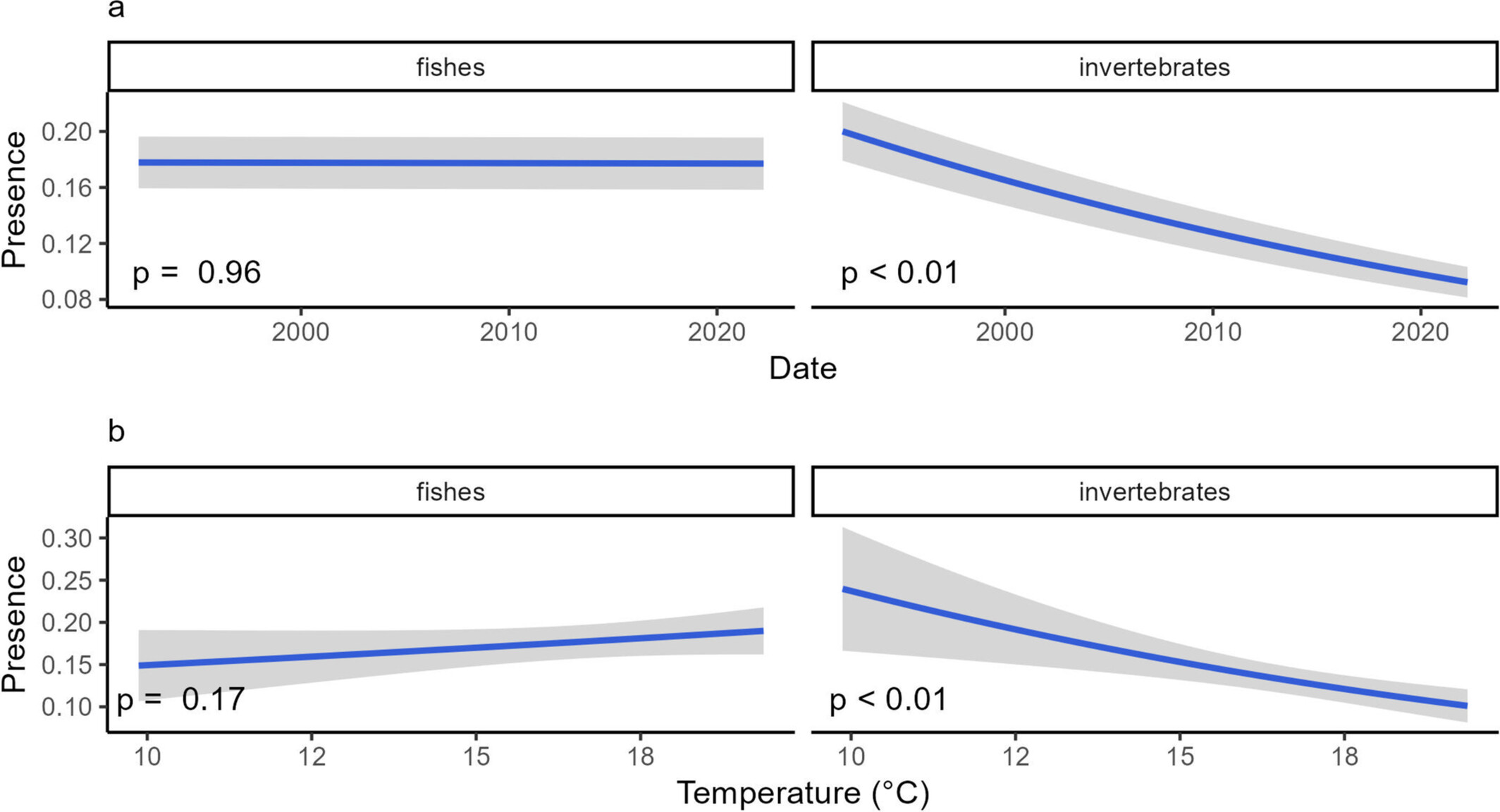
This paper explores the contrasting differences in population trajectories for temperate reef fishes and invertebrates following seasonal and decadal temperature changes. Fishes exhibited seasonal fluctuations but decadal stability, while invertebrates did not change over such short-term intervals but suffered from long-term decline.
Extended Gap Between Snowmelt and Greenup Increases Dust Storm Occurrence
- First Published: 19 May 2025
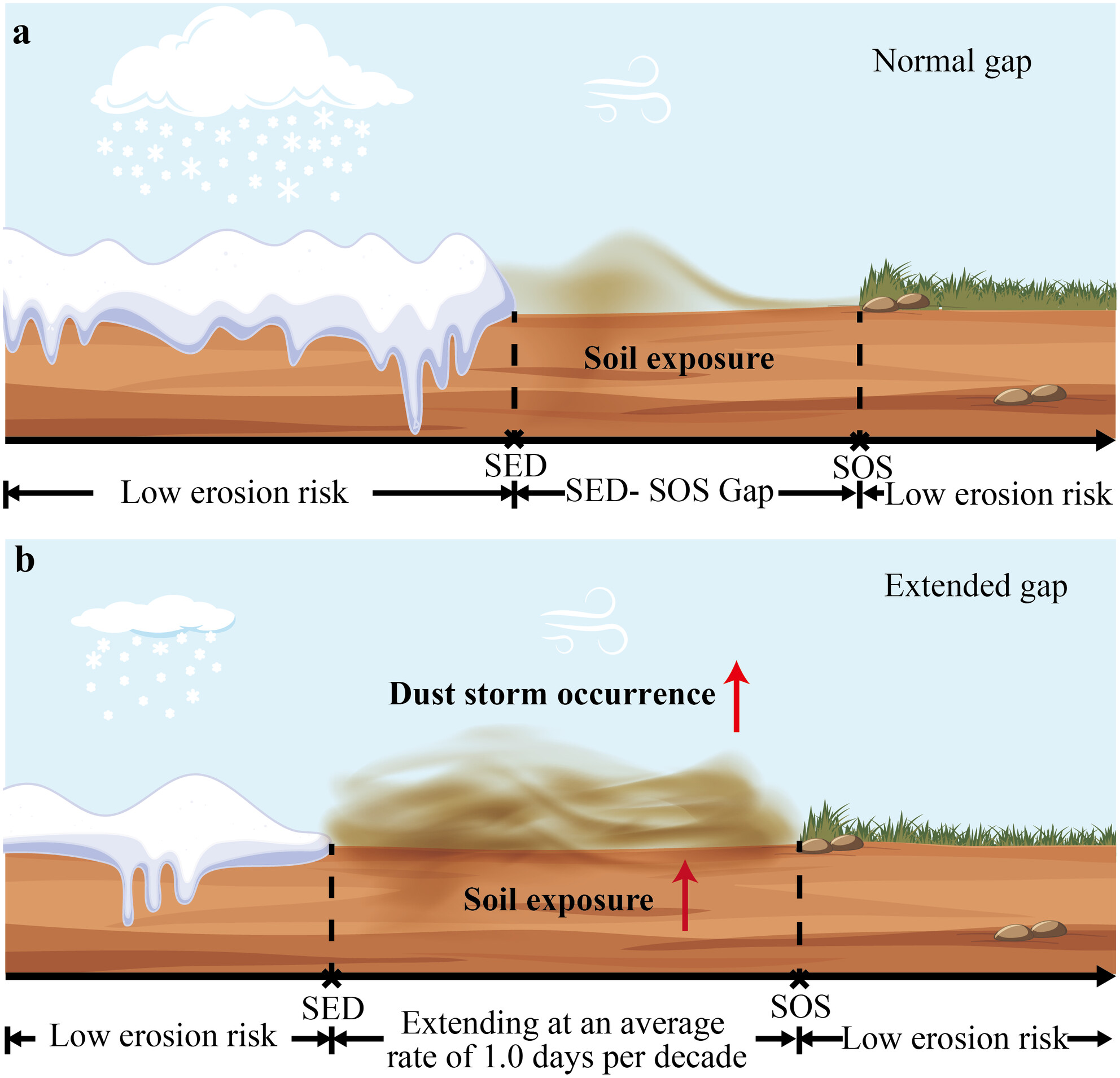
Climate change is causing snow to melt earlier, but spring vegetation green-up isn't always keeping pace, creating a gap between snowmelt and green-up with exposed soils. Using satellite-derived and ground-based data from 2001 to 2019, we find an overall extending trend in the gap across the Northern Hemisphere, especially in mid-latitude regions. A case study in Inner Mongolia shows that an extended gap increases dust storms, as bare soil is exposed longer to wind erosion, posing threats to ecosystems and human health.
Future Climate Shifts for Vegetation on Australia's Coastal Islands
- First Published: 14 May 2025
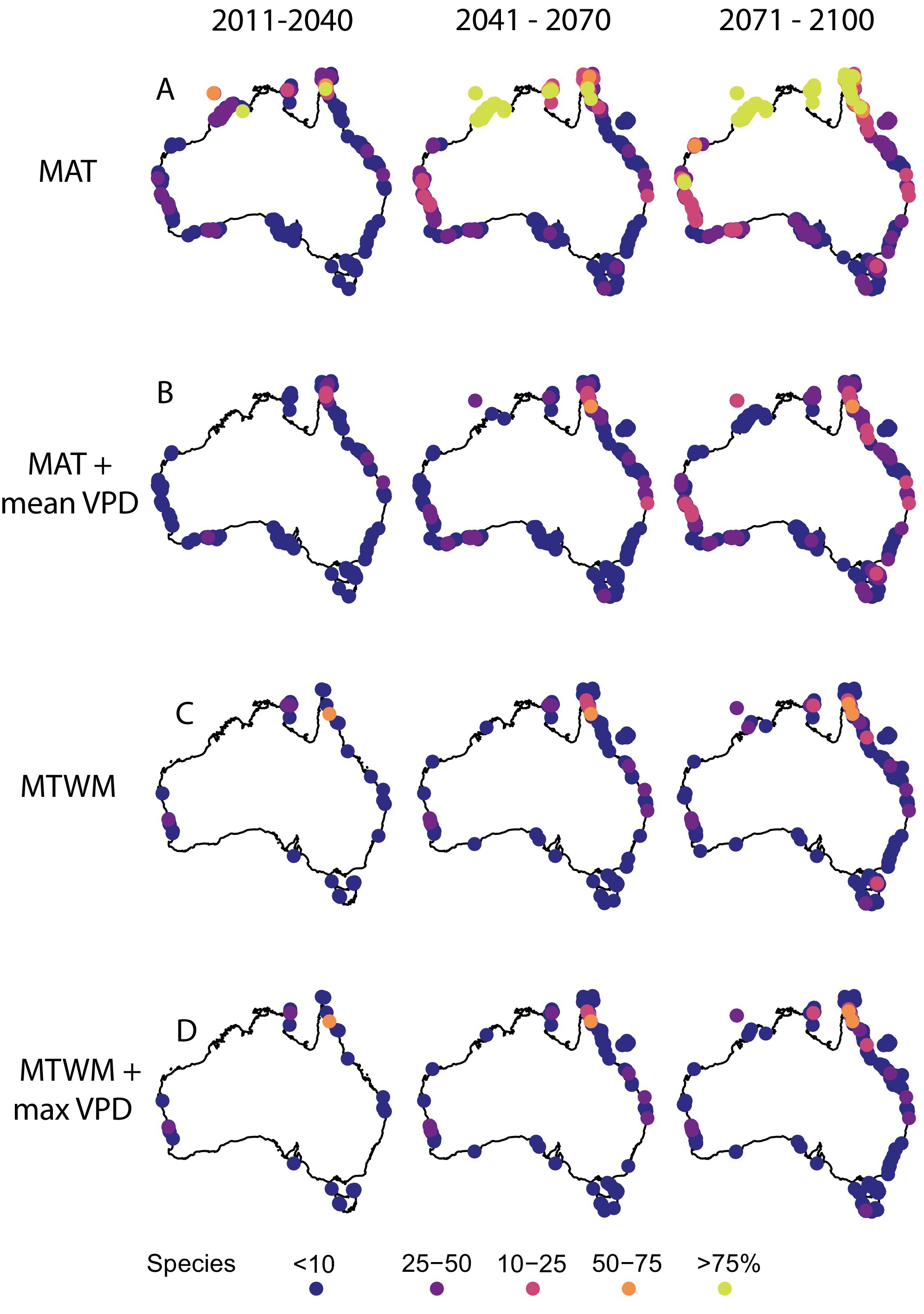
Climate warming is likely to be mild for the plants on coastal islands. Although average annual temperatures will increase relative to their current ranges, the hottest annual temperatures will remain within their known tolerances. Repeat surveys of these islands showed no evidence as yet for plants to be migrating poleward to track their climate niche.
Intermediate Habitat Fragmentation Buffers Droughts: How Individual Energy Dynamics Mediate Mammal Community Response to Stressors
- First Published: 14 May 2025
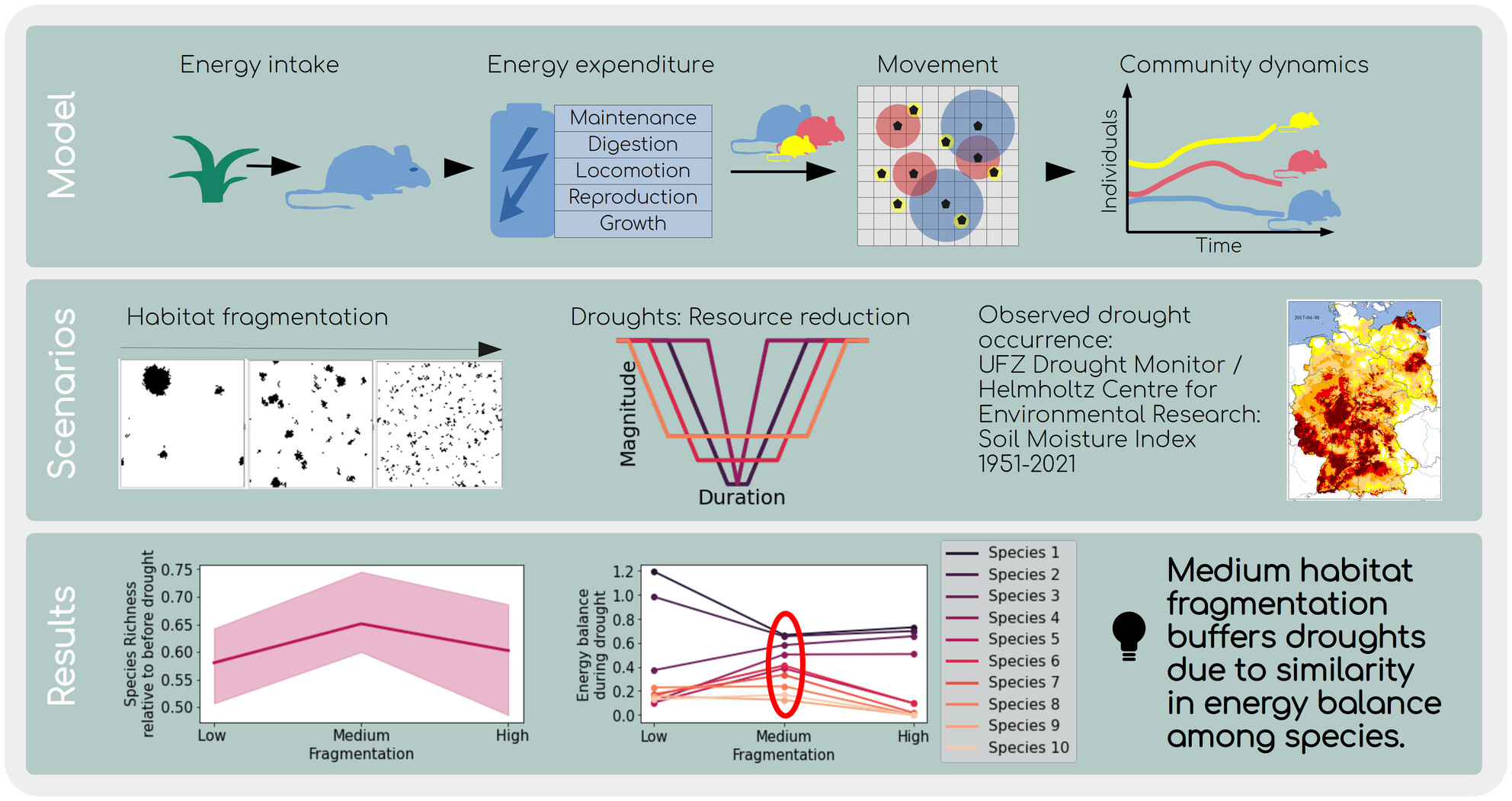
Simulations of our novel individual-based metabolic community model for a terrestrial mammal community revealed a positive effect of intermediate habitat fragmentation on coexistence when simulating habitat fragmentation and droughts as multiple stressors. Landscapes with intermediate habitat fragmentation buffered drought effects best compared to low or high fragmentation, both when simulating experimental droughts of varying length and magnitude, and when integrating observed drought timeseries from monitoring data. The energetic model allowed to conflate these different global change effects and provided insights into coexistence mechanisms with similarity in energy balance among species promoting coexistence and thus diversity.
Supplemental Feeding as a Driver of Population Expansion and Morphological Change in Anna's Hummingbirds
- First Published: 21 May 2025
Cascading Effects Within Soil Food Web Amplify Fungal Biomass and Necromass Production
- First Published: 19 May 2025
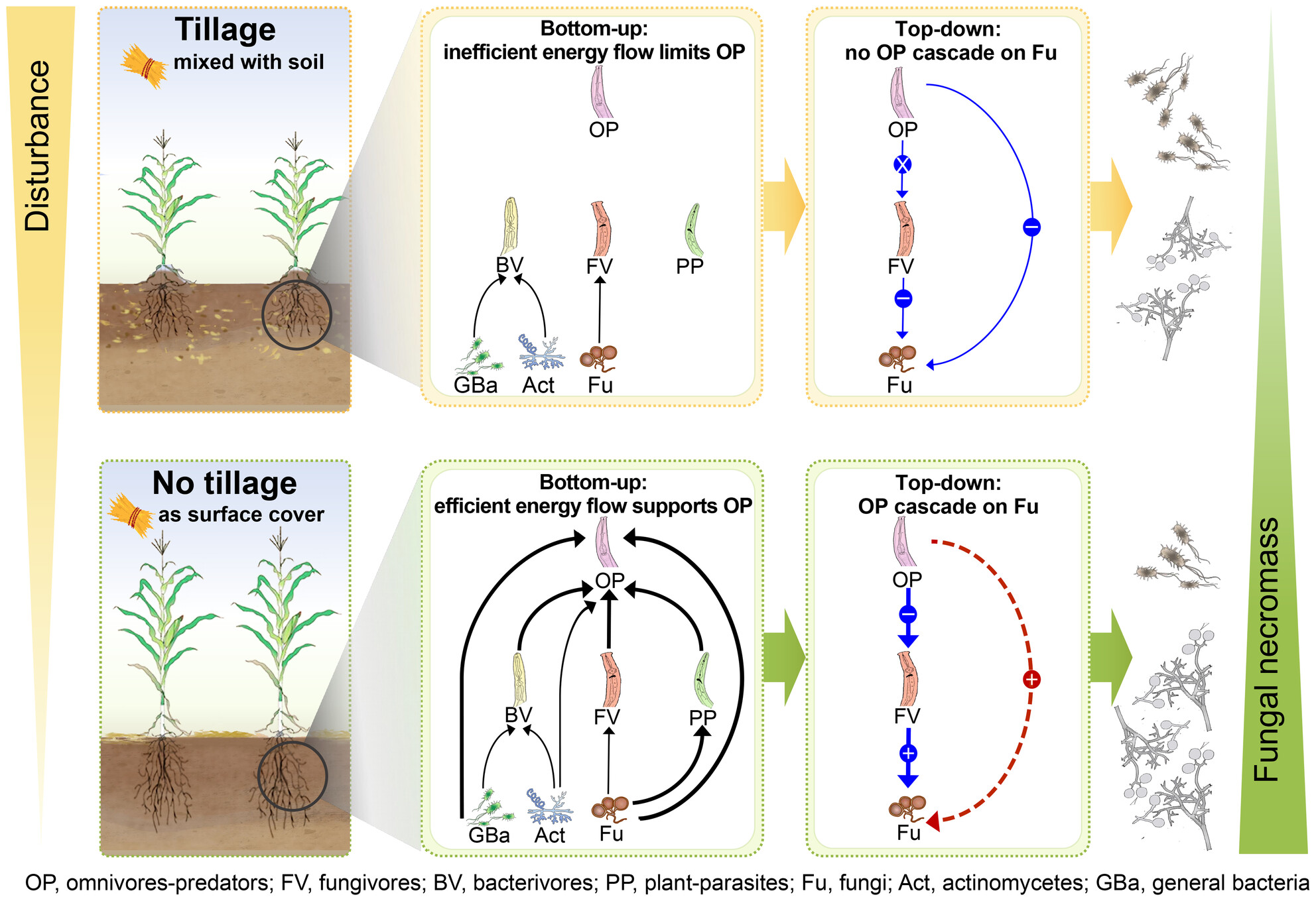
Bidirectional forces - resource-driven bottom-up force and predator-induced top-down force - jointly regulate trophic cascades. In no-till, efficient energy transfer to top predators - particularly omnivorous predaceous nematodes - initiates predator-driven cascades that increase fungal biomass and necromass accumulation. In contrast, despite similar straw incorporation as in no-till systems, continuous tillage interrupts the trophic cascade by disrupting these interactions, thereby weakening fungal functions. These results highlight the sensitivity of predator-prey dynamics to agricultural practices and suggest that harnessing such interactions could play a key role in strengthening and stabilizing long-term soil carbon pools.
Global Change Modulates Microbial Carbon Use Efficiency: Mechanisms and Impacts on Soil Organic Carbon Dynamics
- First Published: 14 May 2025
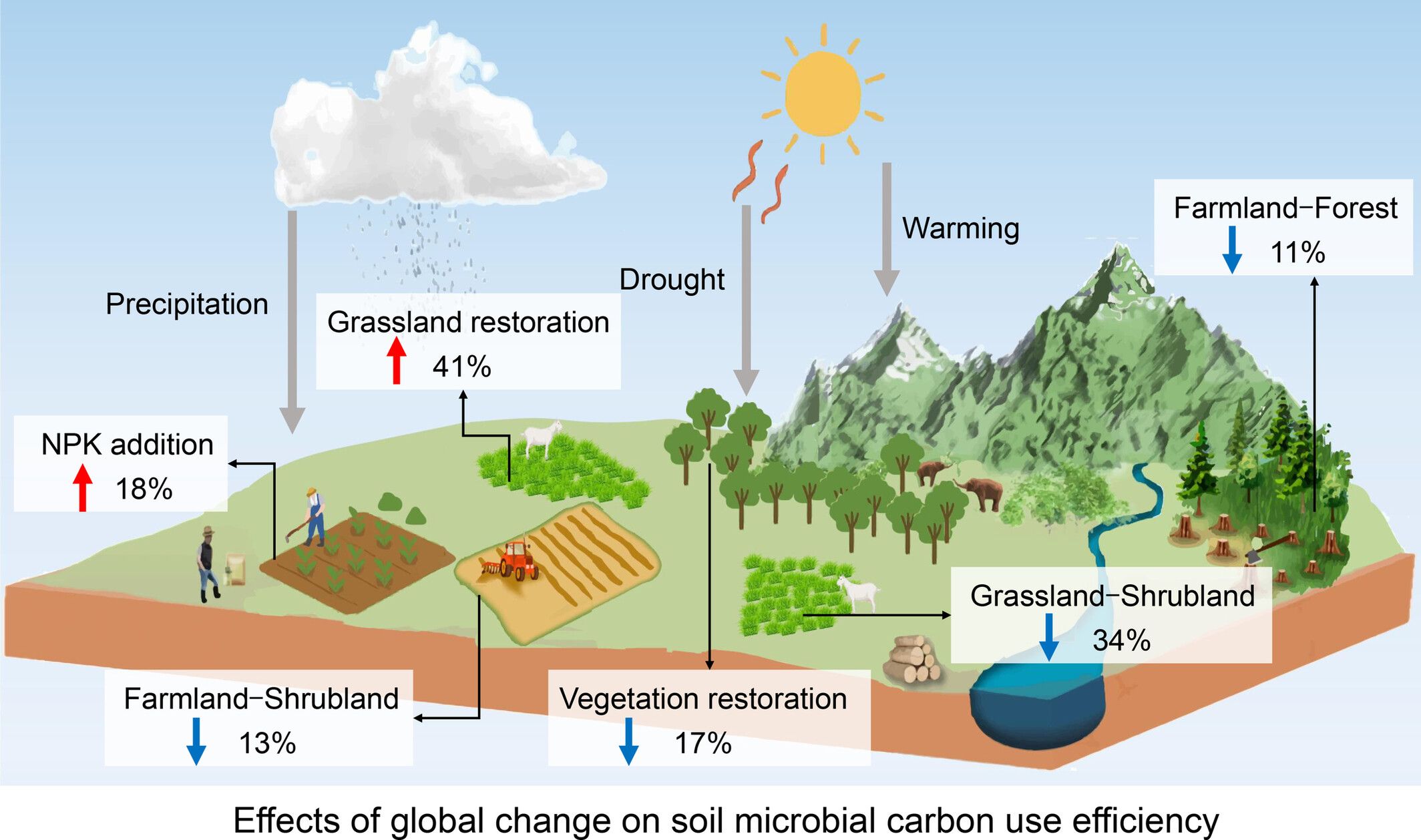
Microbial carbon use efficiency (CUE) in soil is a key parameter to understand organic matter utilization and has consequences for global carbon cycle. This study presents a meta-analysis of the effects of global change factors (GCFs) on CUE. CUE was insensitive to climate change factors and most fertilization practices. GCFs induced shifts in CUE mainly by altering soil pH. The relationship between CUE and soil organic carbon content was decoupled in most global change scenarios. This study advances our understanding of the effects of global change on microbial physiology, with consequences for soil carbon cycling.
Tropical Land-Use Change Disrupts Zeta-Diversity Across Taxa
- First Published: 14 May 2025
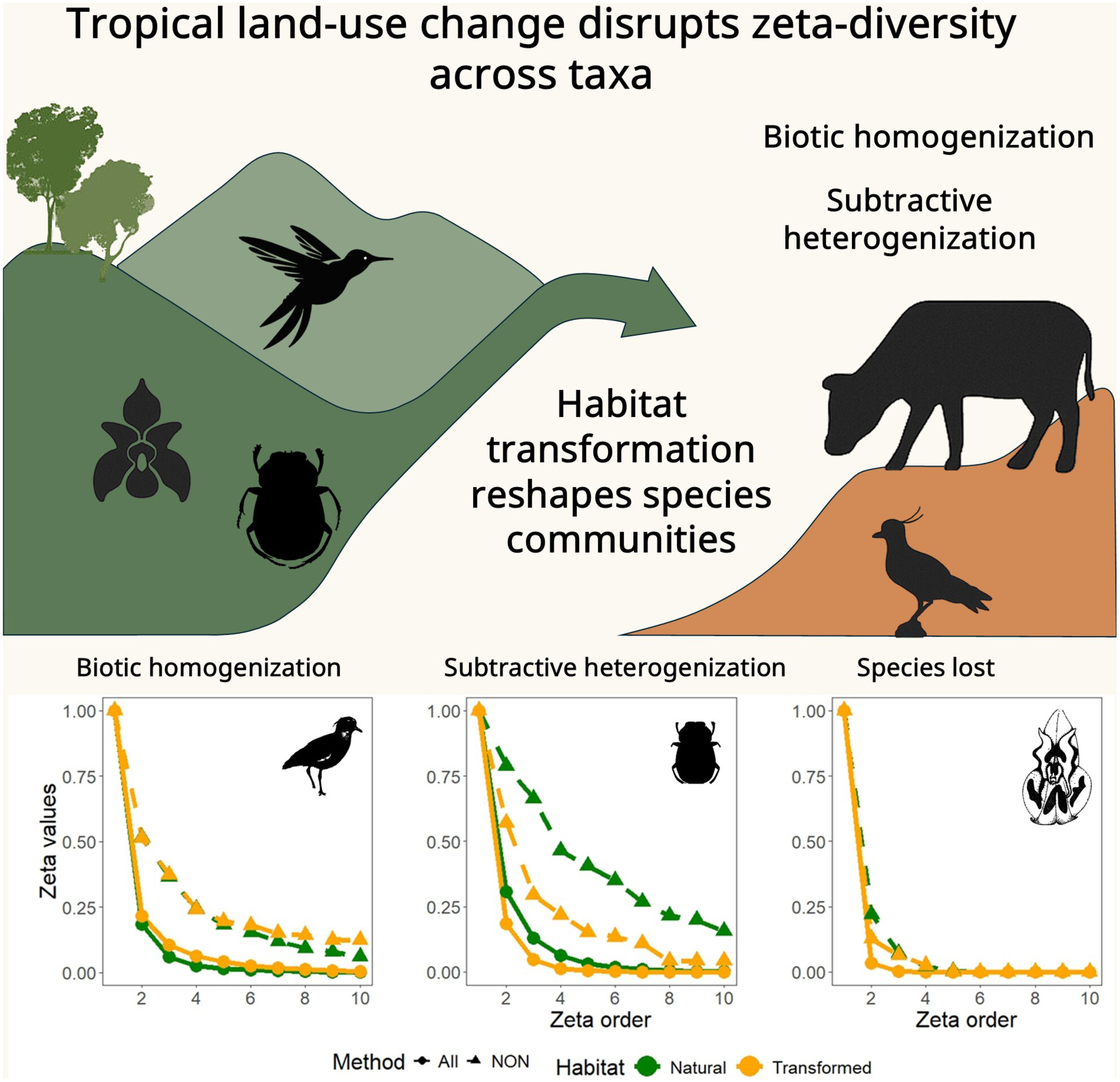
We studied birds, dung beetles, and orchids across natural and human-transformed habitats in the Colombian Andes to understand how land-use change affects biodiversity. We found that deforestation simplifies ecological communities and reduces both rare and widespread species, especially orchids. These changes may increase extinction risk and undermine long-term ecosystem resilience.
Enhancement of Agroecosystem Multifunctionality by Agroforestry: A Global Quantitative Summary
- First Published: 14 May 2025
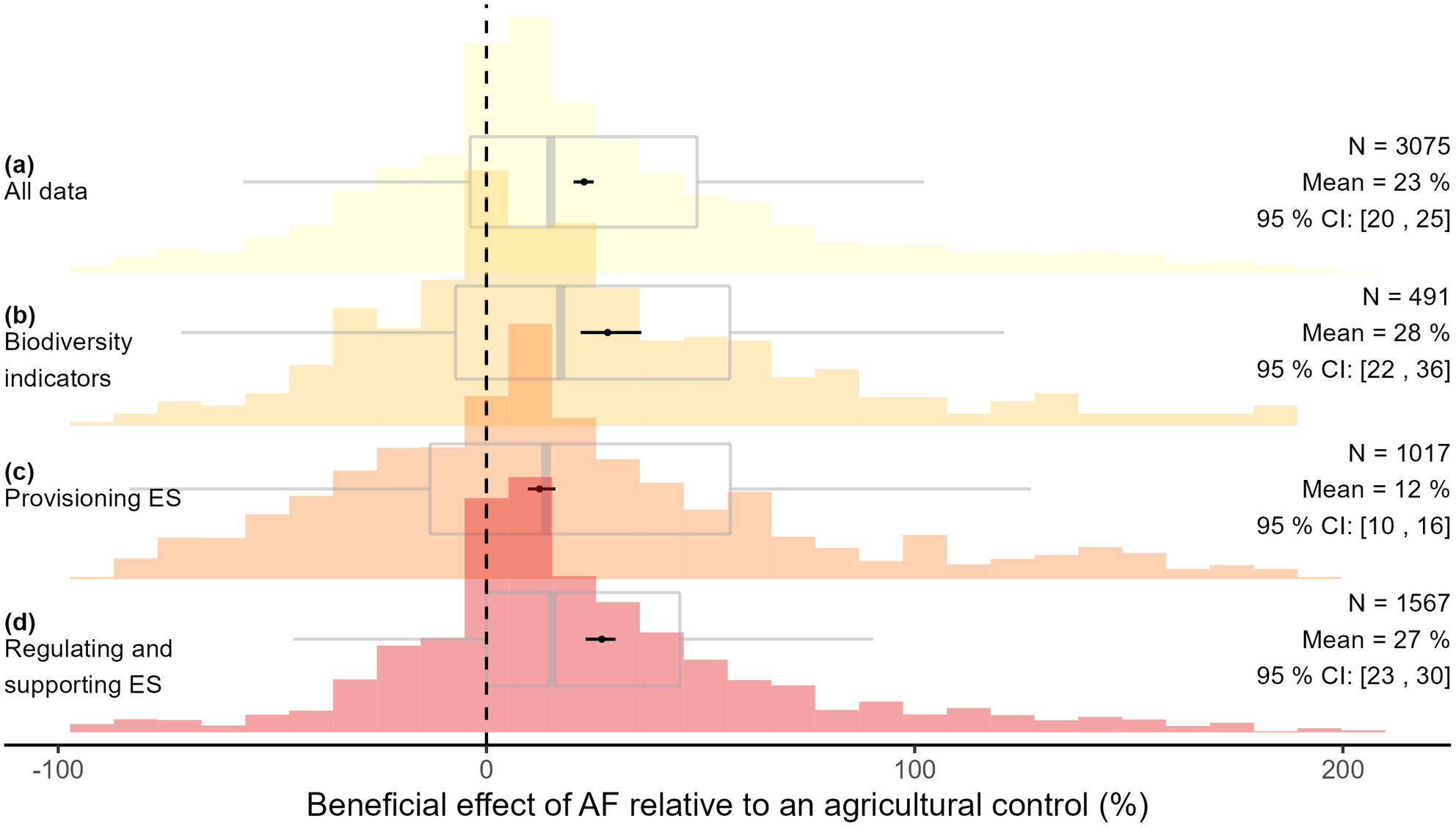
We conducted a global meta-analysis of multiple large-scale studies, comprising 3075 comparisons between agroforestry systems and conventional agricultural systems. On average, agroforestry enhanced ecosystem service delivery and biodiversity by 23%, with more pronounced improvements observed in biodiversity, supporting services, and regulating services relative to production services. The majority of ecosystem service and biodiversity indicators exhibited positive responses to agroforestry, with few showing neutral or negative effects.
Generally Reduced Sink Capacity of Upland Soils for Atmospheric Methane Over the Past Three Decades (1993–2022)
- First Published: 14 May 2025
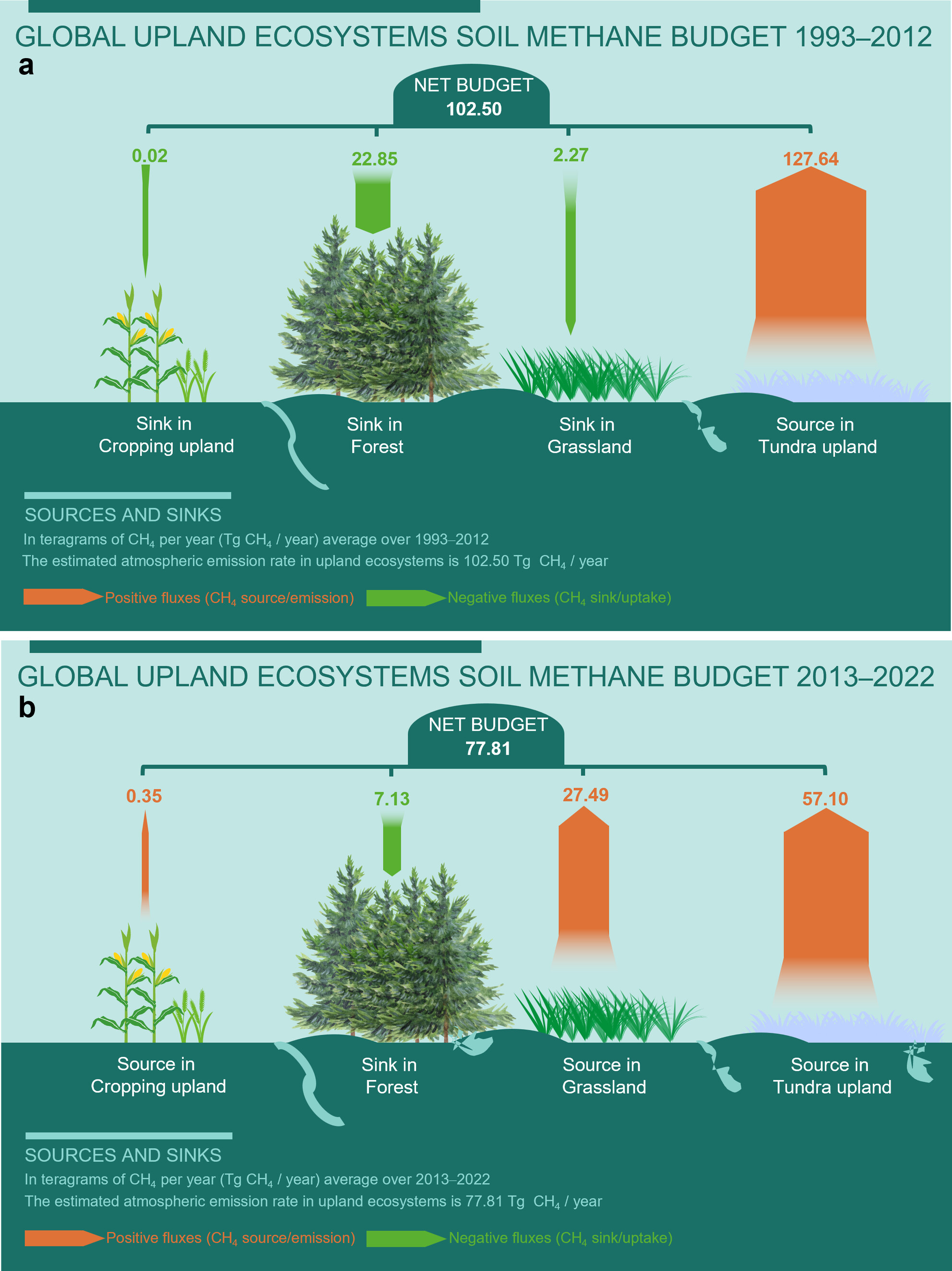
Global CH4 budget in upland soils remains highly uncertain due to incomplete understanding of the shifts in source or sink role of upland soils for CH4 under climate change. In this study, we generated high-resolution global maps of CH4 fluxes from upland soils by integrating field CH4 flux measurement data spanning over the period of 1993–2022 using machine learning models.
Climate-Driven Warming Disrupts the Symbiosis of Bobtail Squid Euprymna scolopes and the Luminous Bacterium Vibrio fischeri
- First Published: 20 May 2025
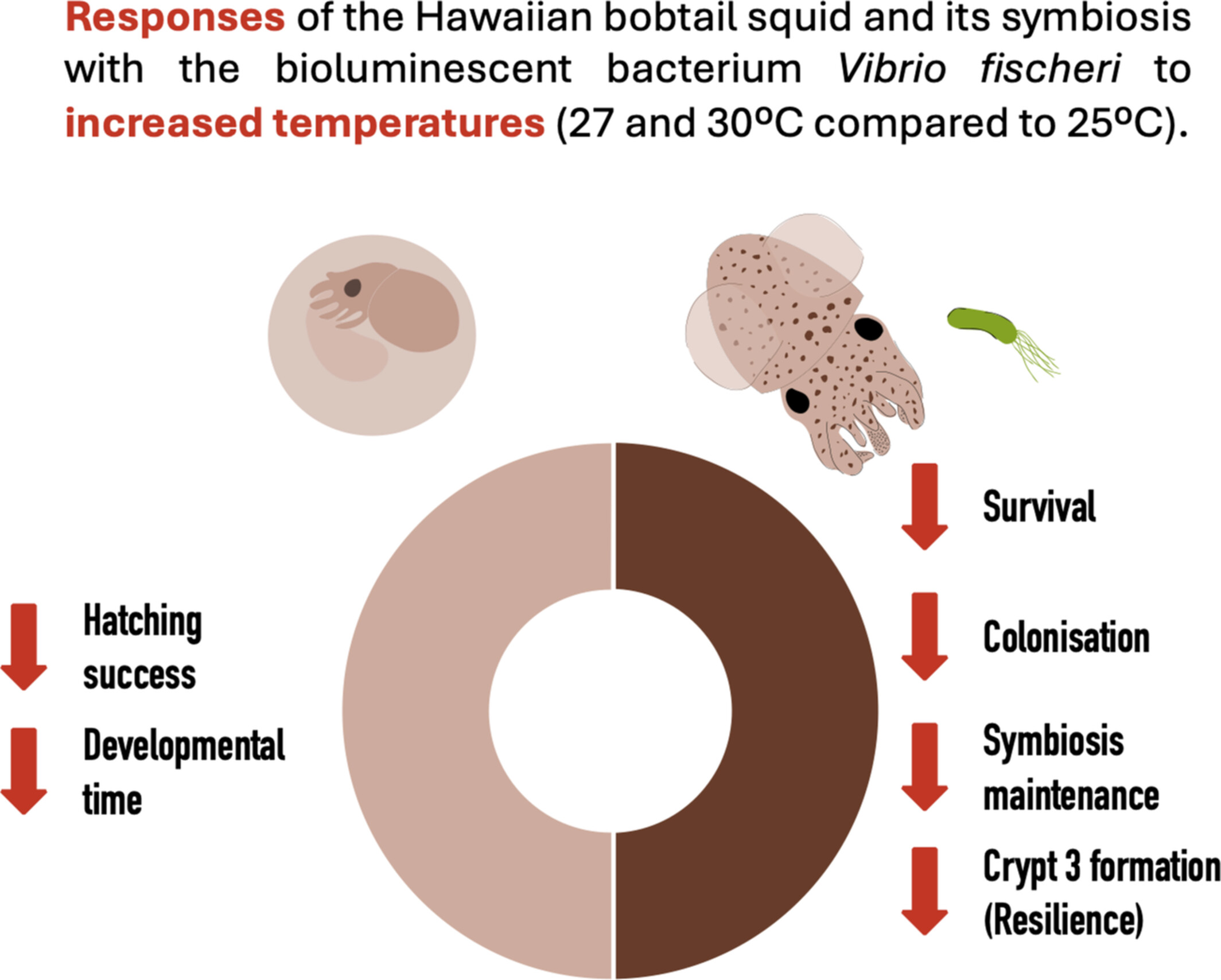
This project aimed to study the impact of high temperatures on the interaction (symbiosis) between the Hawaiian bobtail squid and its light-emitting bacterial partner. We discovered decreased hatching and post-hatching survival under heat stress. Moreover, regarding the symbiosis under high temperature scenarios, we found that (1) more bacterial cells are needed to colonise the animal, (2) the interaction tends to be lost with time and (3) the animal's resilience in keeping the interaction may also decline. These changes may affect the counterillumination ability of this animal (loss of its camouflage at night, using the light emitted by the bacteria).
REVIEW
Offsite Ecological Impacts in the Anthropocene: Definition, Mechanisms, and Challenges
- First Published: 15 May 2025
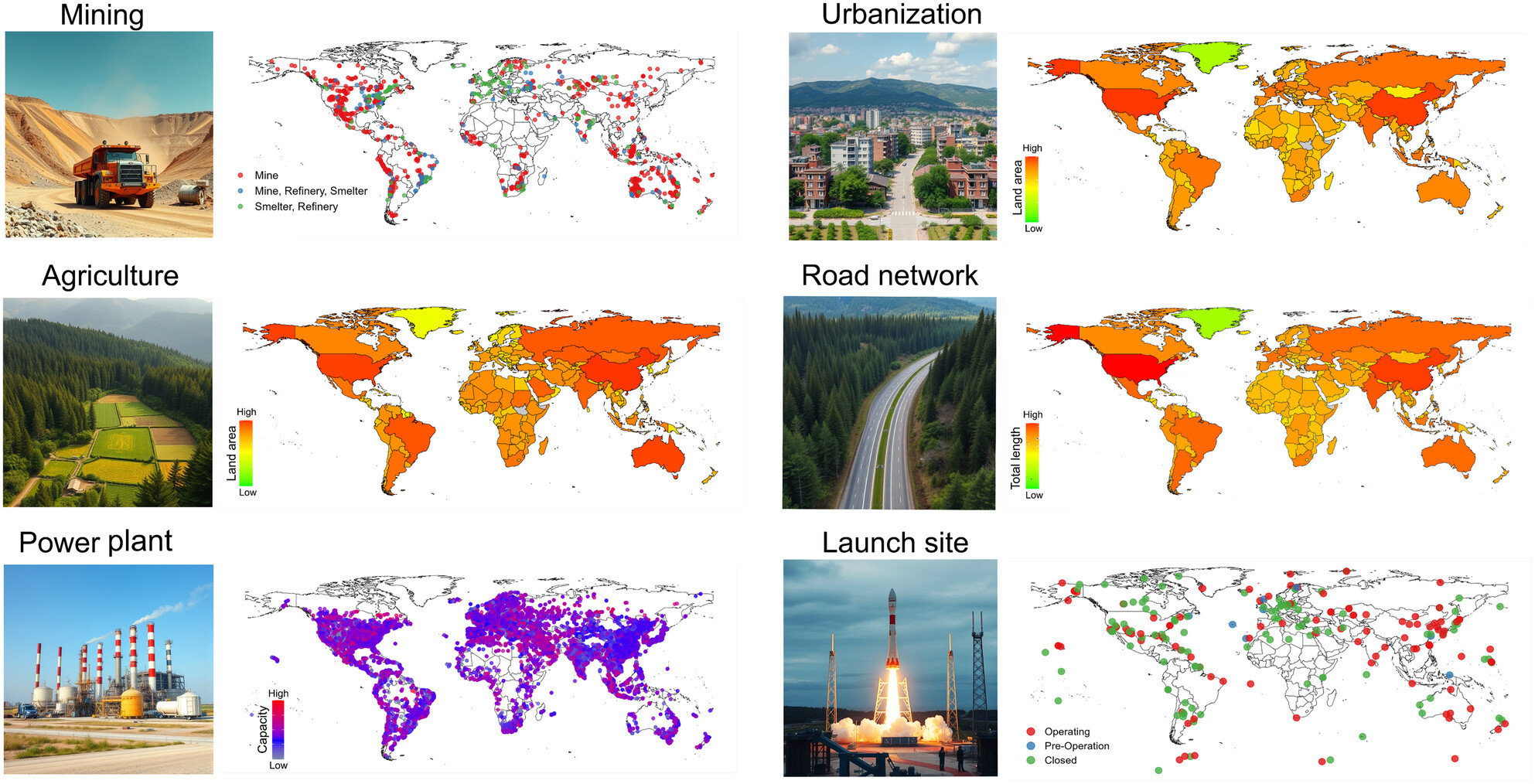
Human activities like mining, farming, and urban development can harm ecosystems far beyond their original locations—a phenomenon known as “offsite ecological impacts,” which are often overlooked in ecological assessments. This study clarifies the definition and spread of these impacts through air, water, soil, and biological vectors, identifies their effects on biodiversity, and pinpoints key human-driven causes. It also explains why such impacts are difficult to detect and manage under global change, emphasizing the urgent need for improved monitoring and innovative conservation strategies to safeguard biodiversity worldwide.
RESEARCH ARTICLE
Temporal and Spatial Dynamics of Soil Carbon Cycling and Its Response to Environmental Change in a Northern Hardwood Forest
- First Published: 16 May 2025
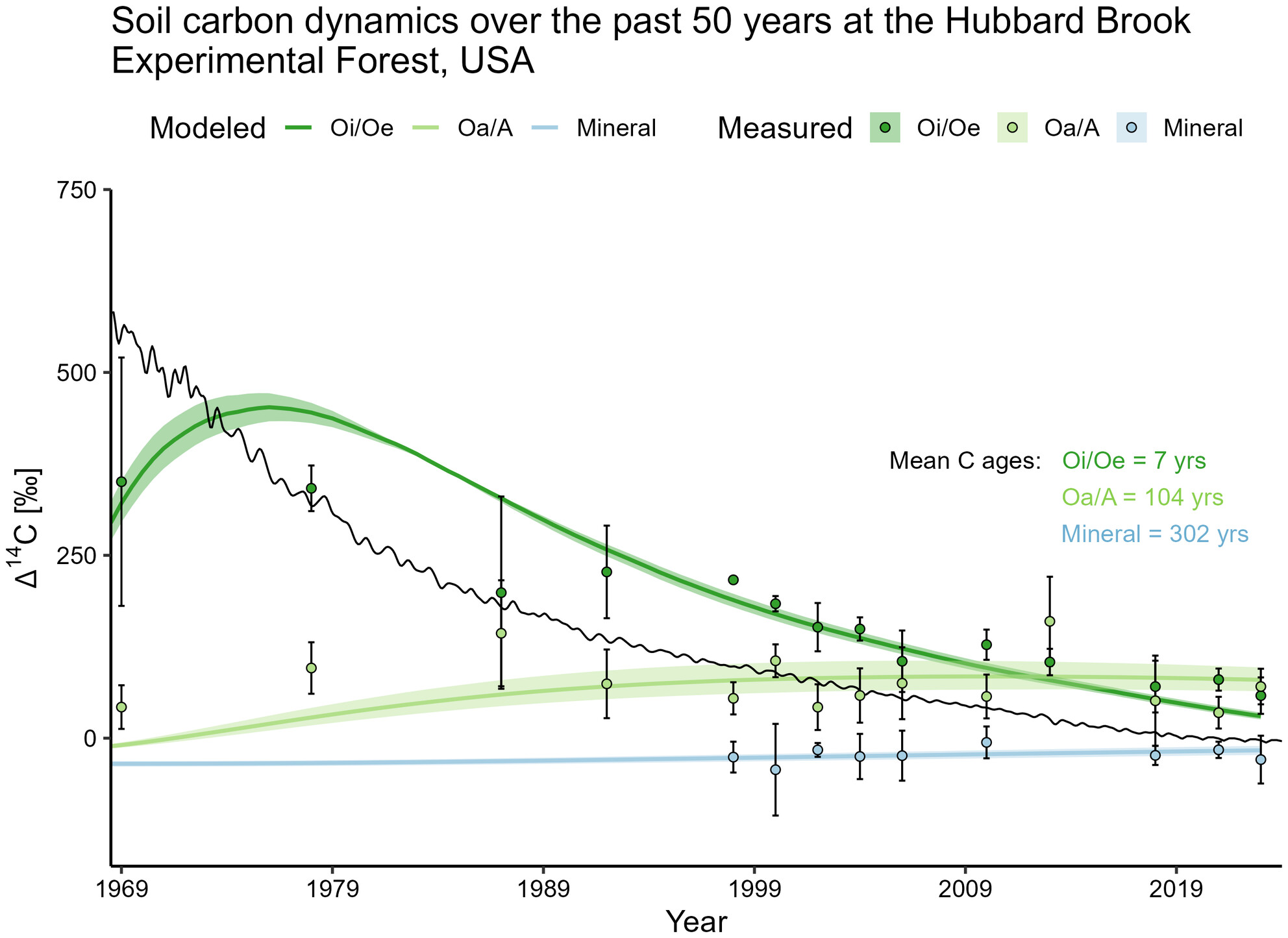
Over 50 years of soil radiocarbon measurements from a hardwood forest in the northeastern USA show that carbon in soil litter cycles much faster than carbon in mineral soil (0–10 cm)—on the scale of years versus centuries. While soil carbon appears stable at the watershed scale, the litter layer is recently losing carbon at the site scale, suggesting that it may serve as an early-warning sign of environmental change. Our work highlights the importance and challenges of considering temporal and spatial soil carbon dynamics in the context of climate change mitigation and beyond.
Functional Traits From Imaging Spectroscopy Inform Patterns of Forest Mortality During Sierra Nevada Drought
- First Published: 15 May 2025
Global Patterns and Drivers of Freshwater Fish Extinctions: Can We Learn From Our Losses?
- First Published: 19 May 2025
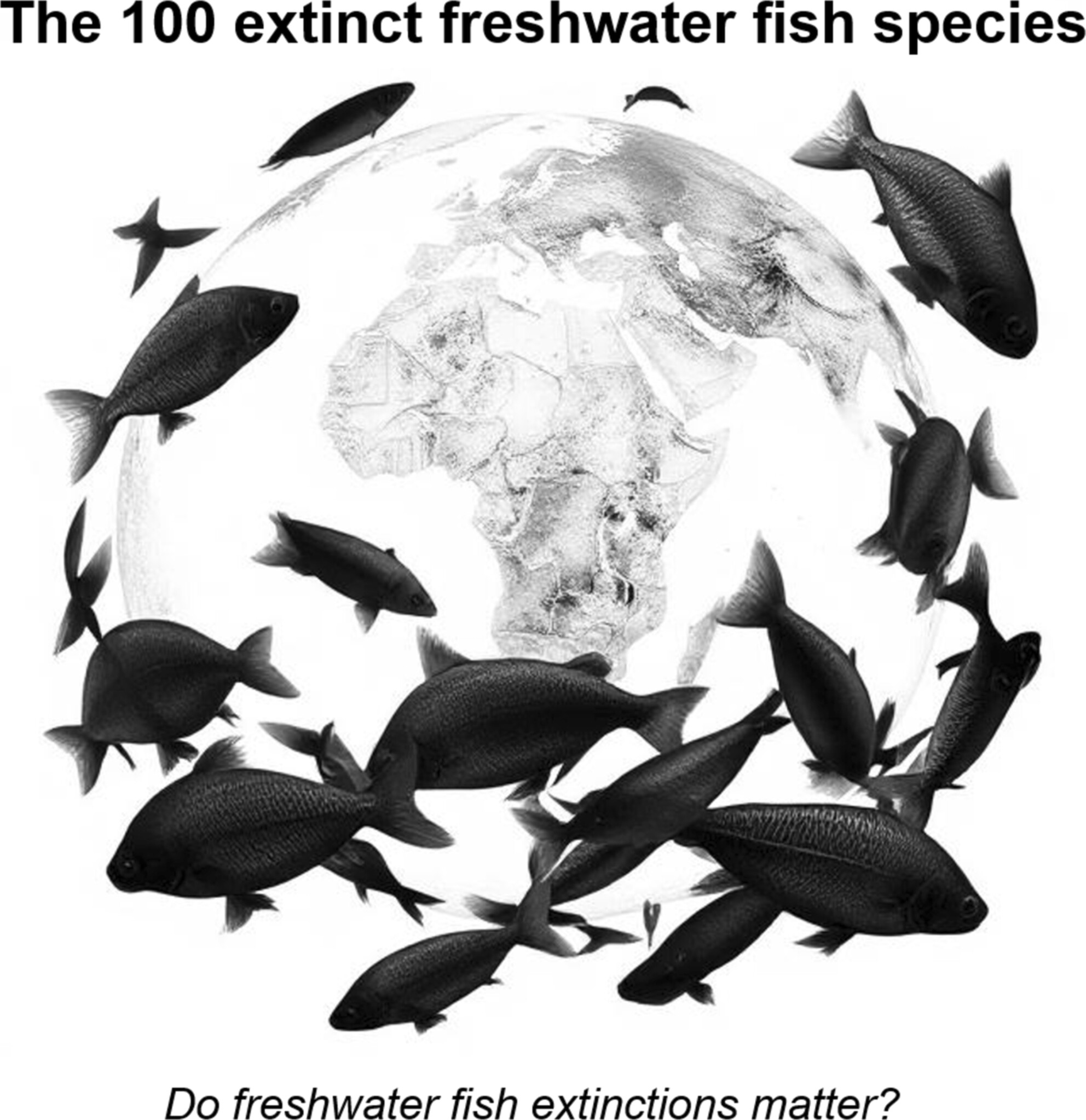
Nearly one-third of freshwater fish species are currently at risk of extinction, with 100 species already lost. This study examines extinction patterns over the past 165 years, identifying habitat modification and loss, pollution, and invasive species as key drivers. North America and Europe are facing the highest rates of extinction, and despite conservation efforts, these rates continue to rise, stressing the urgent need for more effective and integrated strategies to halt further losses.
A Large Fraction of Soil Microbial Taxa Is Sensitive to Experimental Warming
- First Published: 23 May 2025
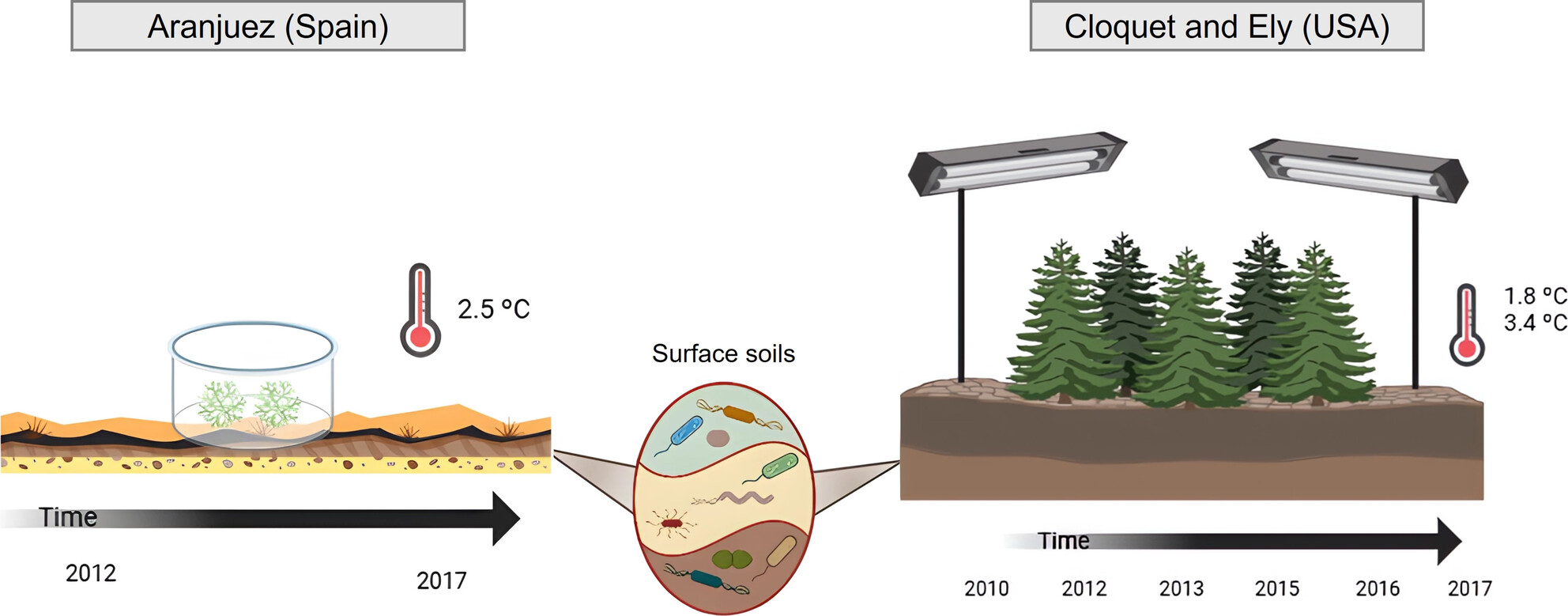
Our analysis revealed that mid-term (> 5 years) warming experiments can reshape (increases or decreases) a substantial portion of microbial community in dryland and temperate-boreal ecosystems. Microbial taxa belonging to the same phylum showed different responses to warming, suggesting that other factors, such as photosynthetic cover or fungal lifestyle (e.g., parasite), may explain these ecological responses. Fungal lifestyles that increased under warming scenarios were associated with higher enzyme activity, indicating an enhanced potential for the microbial community to metabolize carbon in a warmer world.
Moisture–Microbial Interaction Amplifies N2O Emission Hot Moments Under Deepened Snow in Grasslands
- First Published: 20 May 2025
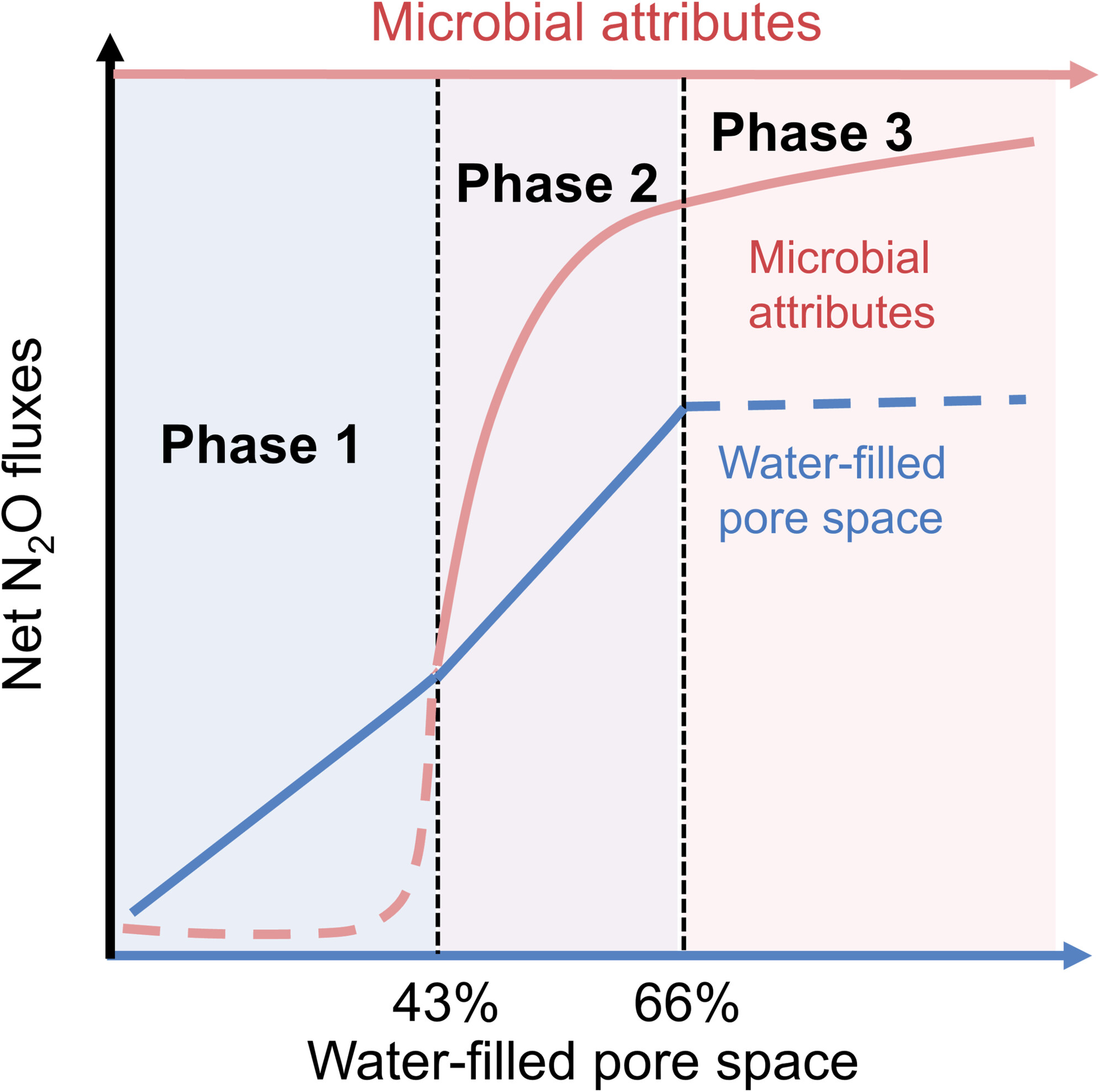
Freeze-thaw periods are hot moments for N2O emissions, but their episodic nature and high variability make them difficult to study. Combining soil core incubations with automated measurements, we investigate how deepened snow affects freeze-thaw-induced N2O emissions. We found that brief ~50-day pulse emissions accounted for over 50% of annual fluxes. These hot-moment emissions were mainly driven by hierarchical control of soil moisture and microbial attributes. High root biomass and microbial activity facilitated the formation of hotspots of these emissions in cold and humid grasslands. Integrating these hot moments into process-based models could enhance the accuracy of global N2O budget prediction.
Susceptibility to Photosynthesis Suppression From Extreme Storms Is Highly Site-Dependent
- First Published: 22 May 2025
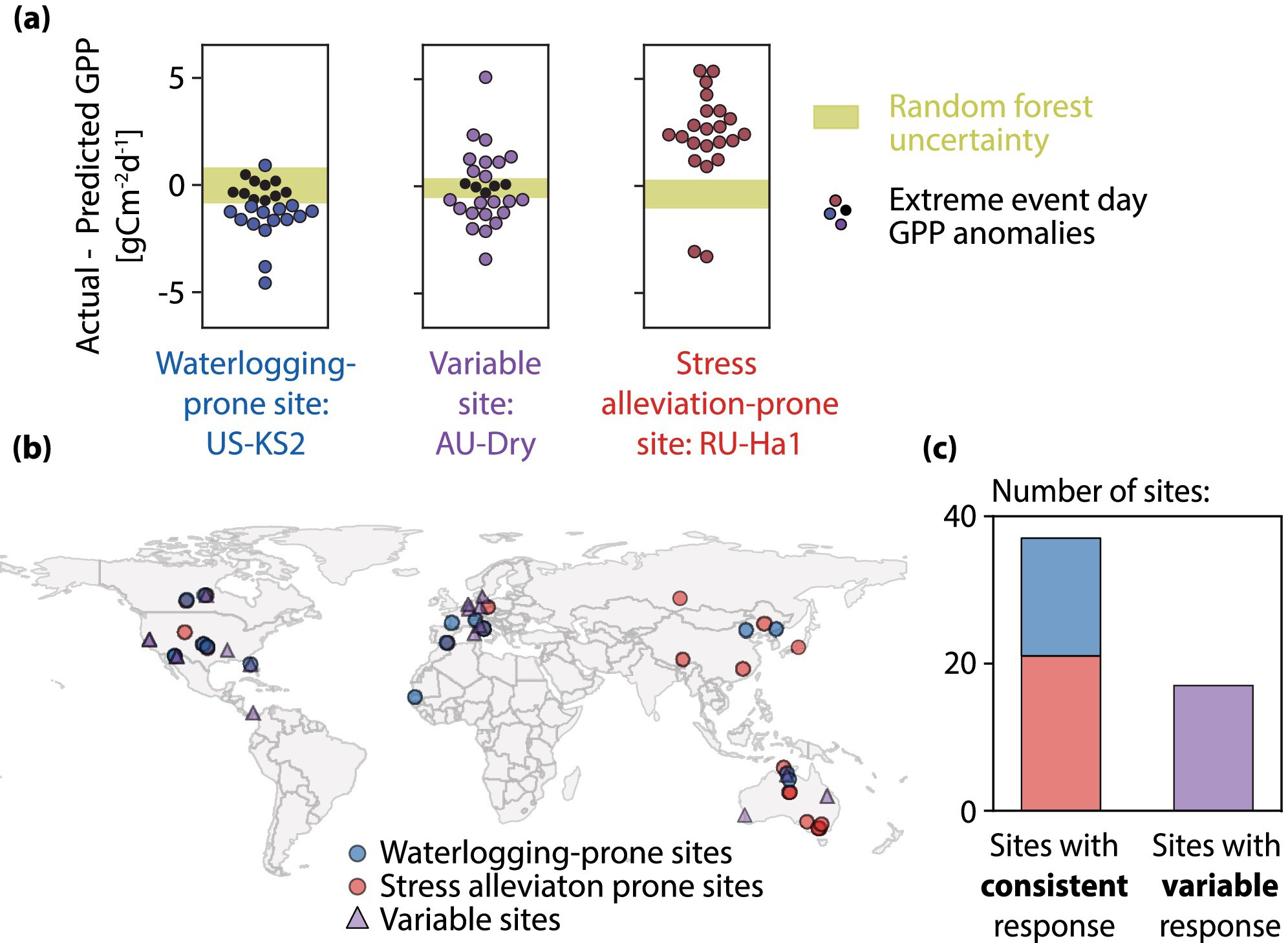
Extreme storms are becoming more intense and frequent under climate change. However, the impact of individual extreme storms on photosynthesis—and therefore on vegetation and the carbon cycle—remains difficult to predict. Here, we use random forest models to calculate daily photosynthesis anomalies attributable to extreme soil moisture using data from 54 FLUXNET sites across the globe. We find that photosynthesis responses are better explained by site characteristics than by storm intensity, such that the likelihood of waterlogging from a given storm is heavily site-dependent. Increasingly intense storms under climate change are therefore unlikely to impact all locations equally.
Global Tiger Density Linked With Forest Carbon Stock, Top-Down and Bottom-Up
- First Published: 07 May 2025
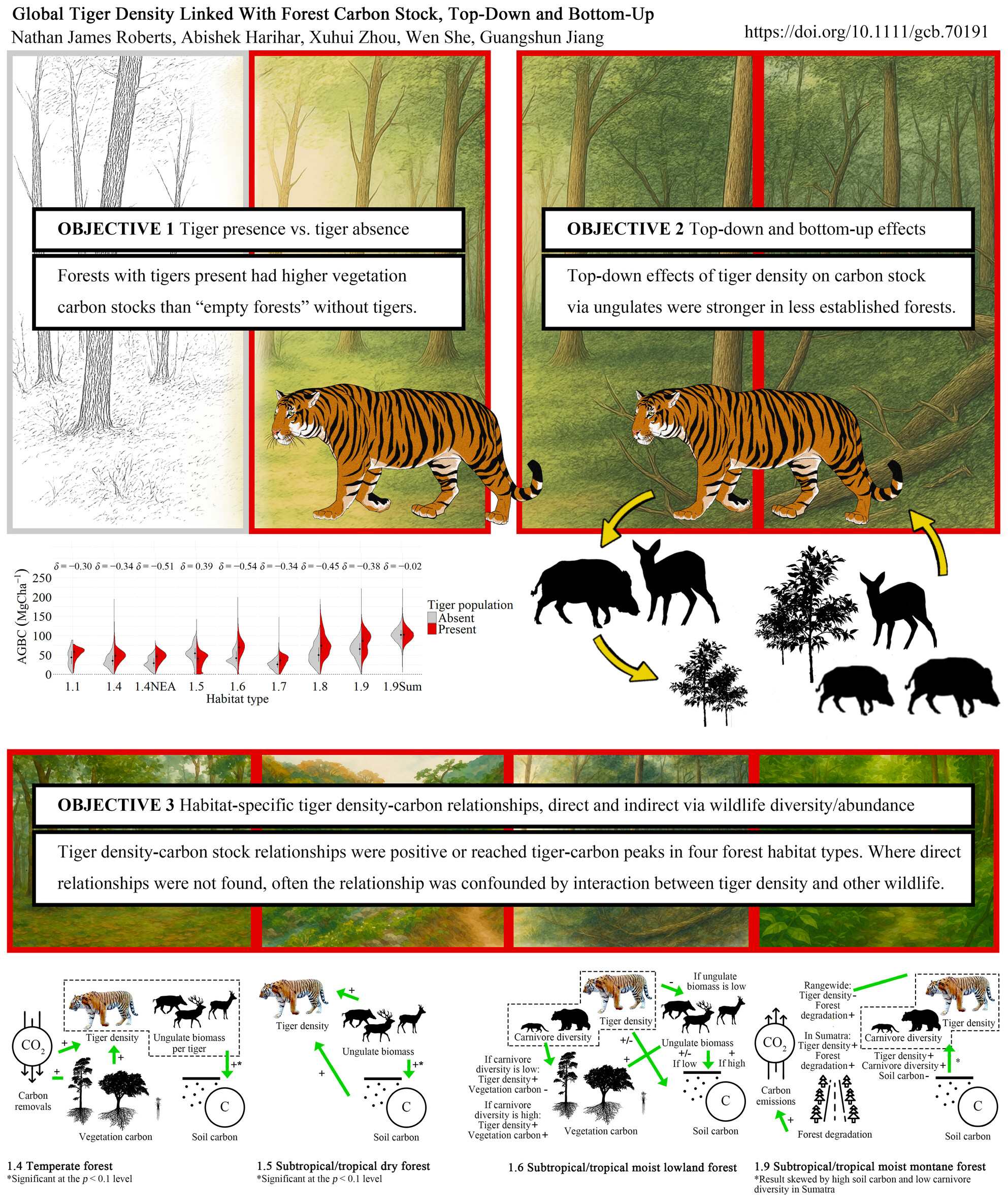
Globally, forests with tigers living within them store more vegetation carbon than forests without tigers, near consistently across forest habitat types. Our results also showed that in disturbed forests, tigers appear to exert top-down control of carbon stocks through impacts on ungulate biomass where ungulate biomass and carbon stocks are low; in contrast, in more established forests with higher ungulate biomass and carbon stocks, tiger-carbon relationships are more likely bottom-up at the scale of our analyses. Additionally, tiger density is positively related to carbon stock in vegetation or soil in four forest habitat types or reached tiger-carbon peaks. Graphical abstract artwork by Dakota Harr.
Natural Regeneration Enhances Long-Term Soil Carbon Storage in Various Fractions More Effectively Than Active Restoration: Meta-Analysis
- First Published: 23 May 2025
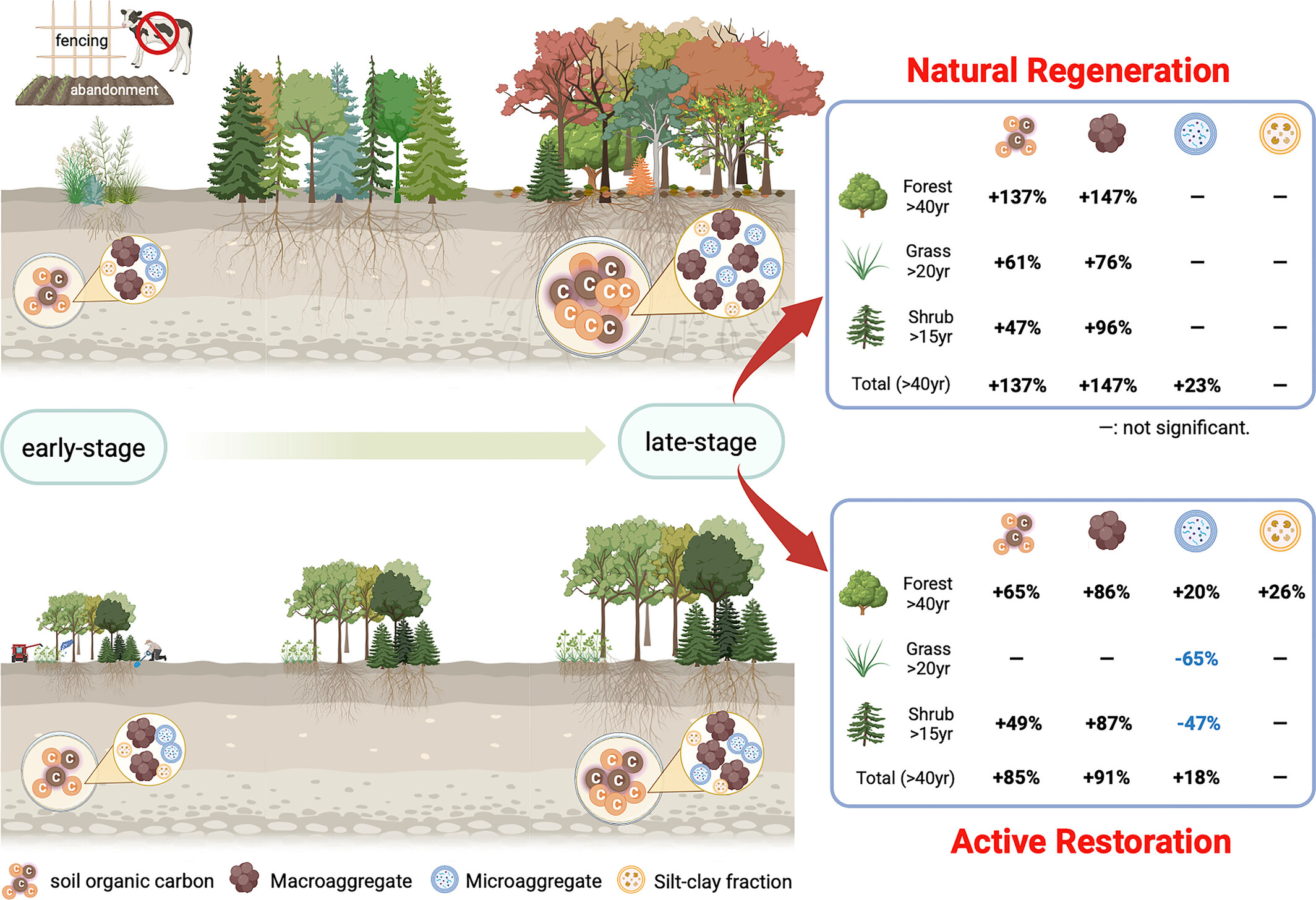
We conducted a global meta-analysis to assess the temporal effects of natural and active restoration on soil organic carbon (SOC) and aggregate organic carbon, including macroaggregate (MAC), microaggregate (MIC), and silt-clay fraction (SCC) organic carbon. Natural regeneration outperformed active restoration, showing 21% and 24% higher increases in SOC and MAC. The benefits of natural regeneration on SOC and MAC intensified over time, surpassing active restoration after 40 years. In different terrestrial ecosystems, natural regeneration also showed greater effectiveness in late-stage soil organic accumulation. In addition, natural regeneration enhanced SOC storage in deeper soil layers and in carbon-poor areas.
Carbon Emissions From Fires in Eastern Siberian Larch Forests
- First Published: 23 May 2025
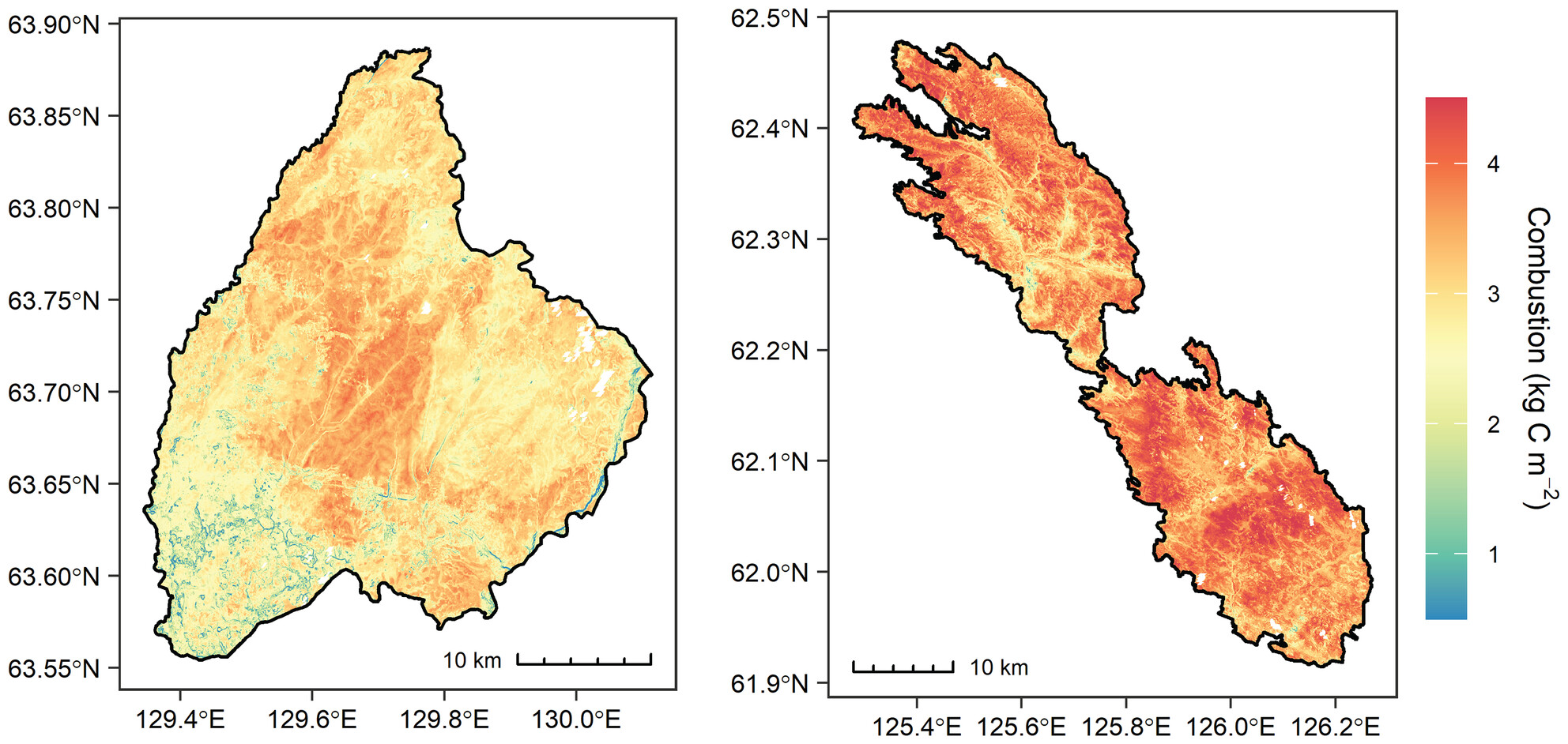
The present study provides new insights on combustion processes from Siberian larch forest fires. We estimated combustion from vegetation and organic soils at 41 burned plots and spatially extrapolated our plot-level estimates to the areas of two large fire events. Our combustion rates were comparable to those observed in boreal North America and exceeded those previously reported for other forest types and burning conditions in Siberia. We found that carbon combustion was driven by both fire weather conditions and landscape variables. Our results highlight the need to better account for the impact of these fires on the regional carbon balance.
Unexpected Large Photosynthetic Thermal Plasticity of Montane Andean Trees
- First Published: 23 May 2025
INVITED OPINION
Achieving the Global Biodiversity Framework Under Climate Change
- First Published: 27 May 2025
INVITED COMMENTARY
RESEARCH ARTICLE
A Step Sideways From the Green Revolution in the Light of the European Green Deal
- First Published: 27 May 2025
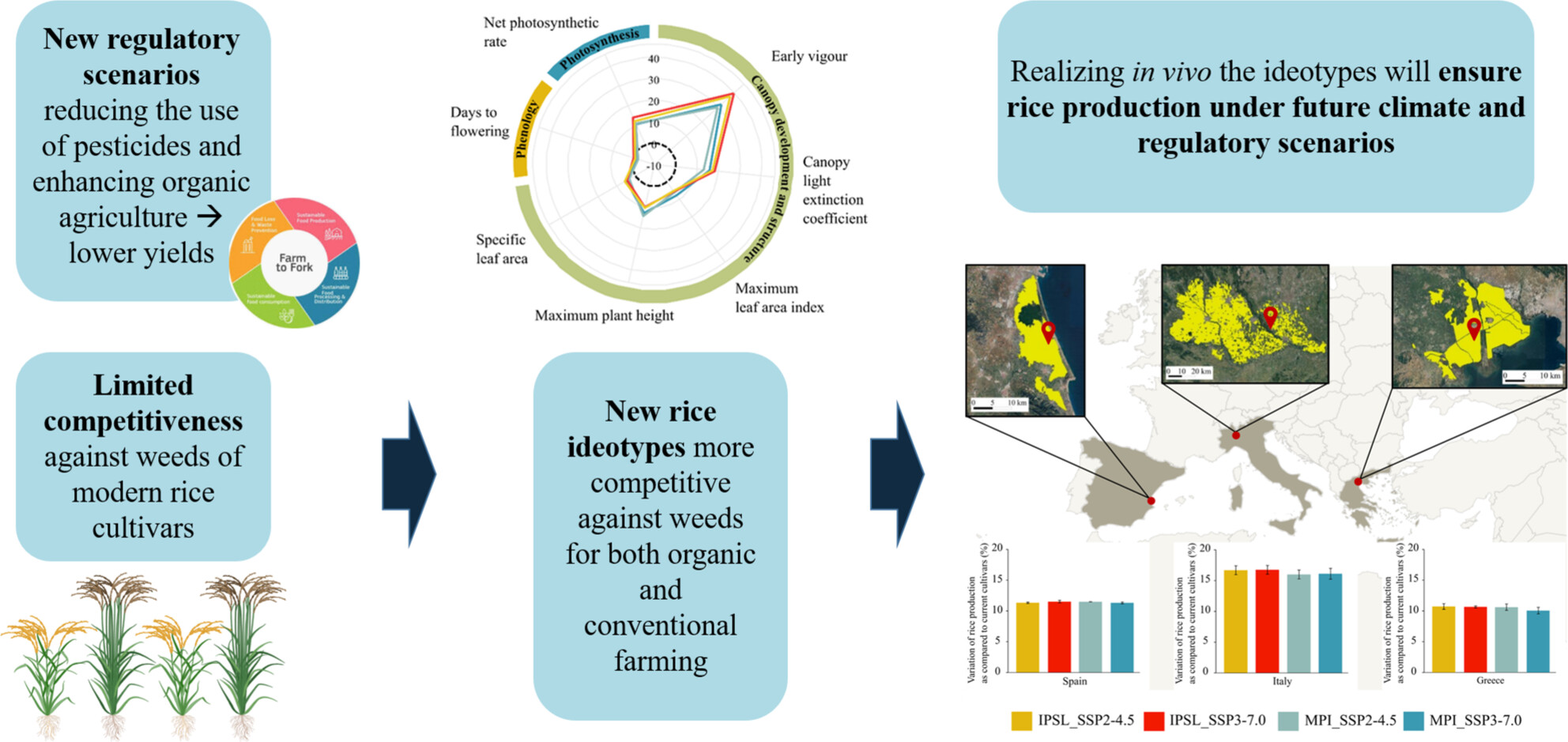
Reducing pesticide use and extending organic farming are key targets of regulatory initiatives aimed at increasing the environmental friendliness of food systems. However, they are expected to decrease cereal yields, also because modern cultivars—shaped by the Green Revolution—have limited competitiveness against weeds. We used simulation tools explicitly reproducing crop–weed interactions to design rice ideotypes more competitive against weeds, targeting both conventional and organic farming under future climate projections in three top European rice districts. We showed that realising in vivo cultivars based on the proposed ideotypes can counterbalance yield losses due to the partial shift towards organic agriculture.
Invasive Fish Reshape Biodiversity Patterns in China's Freshwater Lakes
- First Published: 27 May 2025
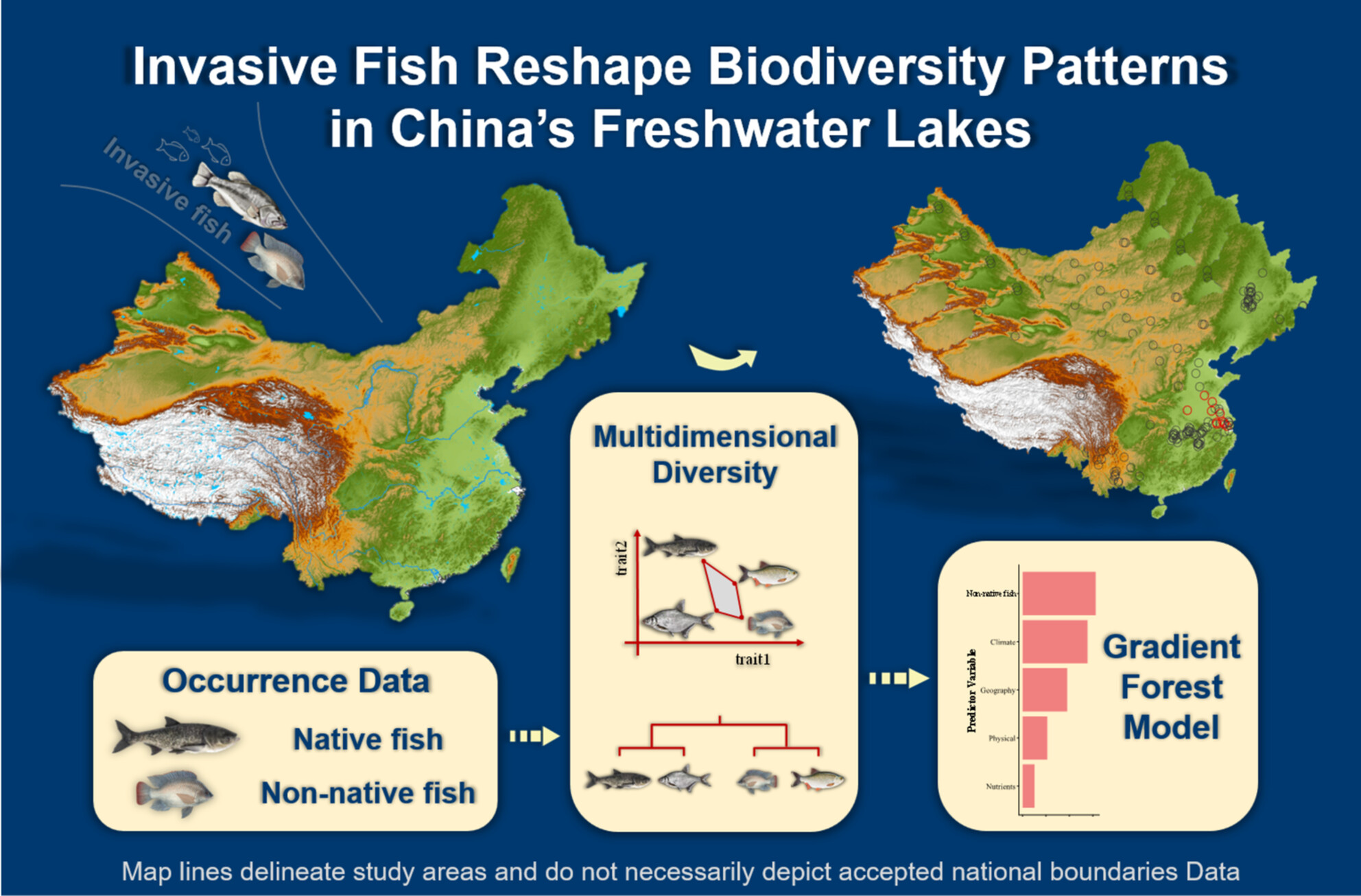
This study represents a breakthrough in conservation ecology by linking local biodiversity transformations with a pressing global issue. By revealing where and how invasive species affect freshwater ecosystems, we offer actionable data and a scalable model that can support conservation priorities in other biodiverse, at-risk regions.
Biodiversity and Management as Central Players in the Network of Relationships Underlying Forest Resilience
- First Published: 12 May 2025
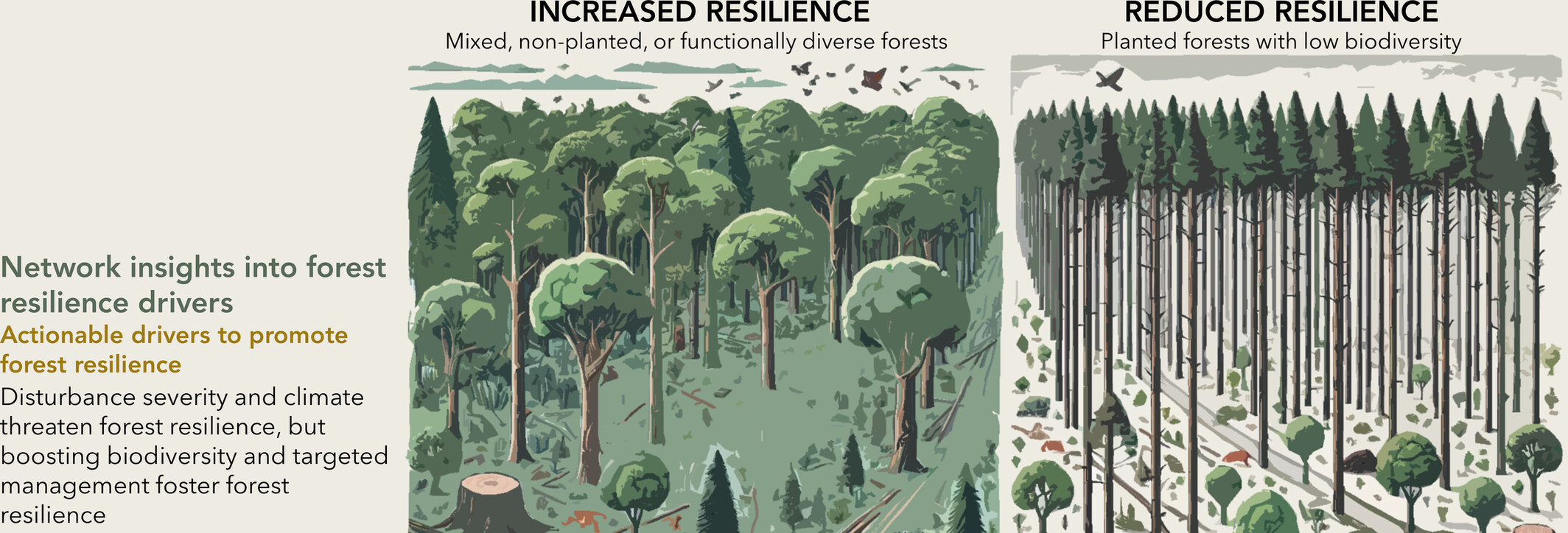
Forests are facing growing threats from climate change and other disturbances. By reviewing hundreds of studies worldwide, we identified key factors—such as biodiversity and specific management practices—that help forests resist and recover from disturbances, enhancing their resilience. While some strategies are effective across regions, others need to be tailored to local conditions. This research offers practical insights to improve forest resilience and protect the benefits forests provide to people and nature.
Snow Height Sensors Reveal Phenological Advance in Alpine Grasslands
- First Published: 09 May 2025
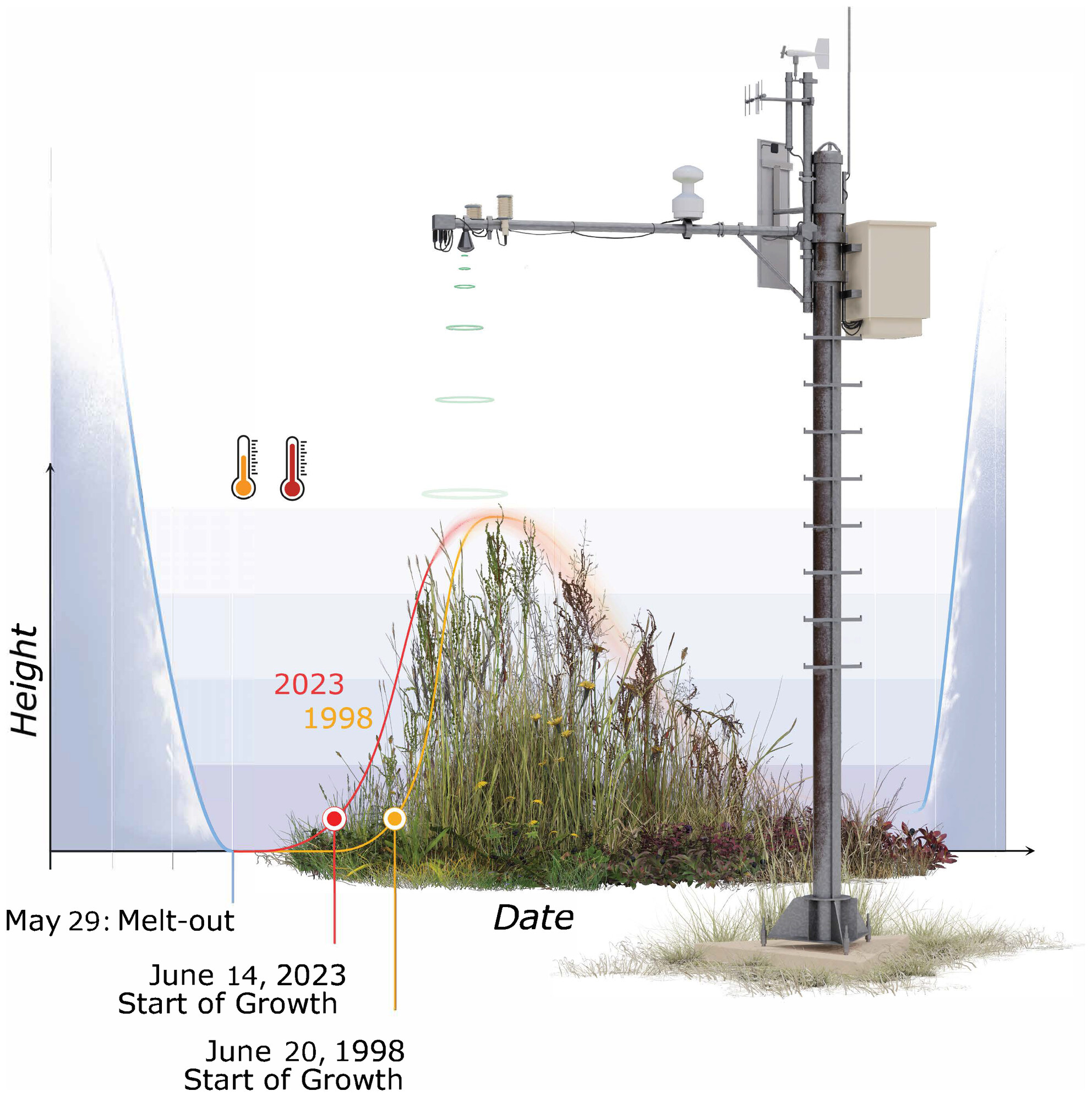
This study investigates how snowmelt timing and rising temperatures have influenced the advancing onset of plant growth in alpine grasslands across the Swiss Alps. Using automated snow-depth and vegetation height measurements from climate stations, we show that alpine grasslands have advanced their green-up by an average of 6 days between 1998 and 2023, alongside strong warming of up to 2°C.




